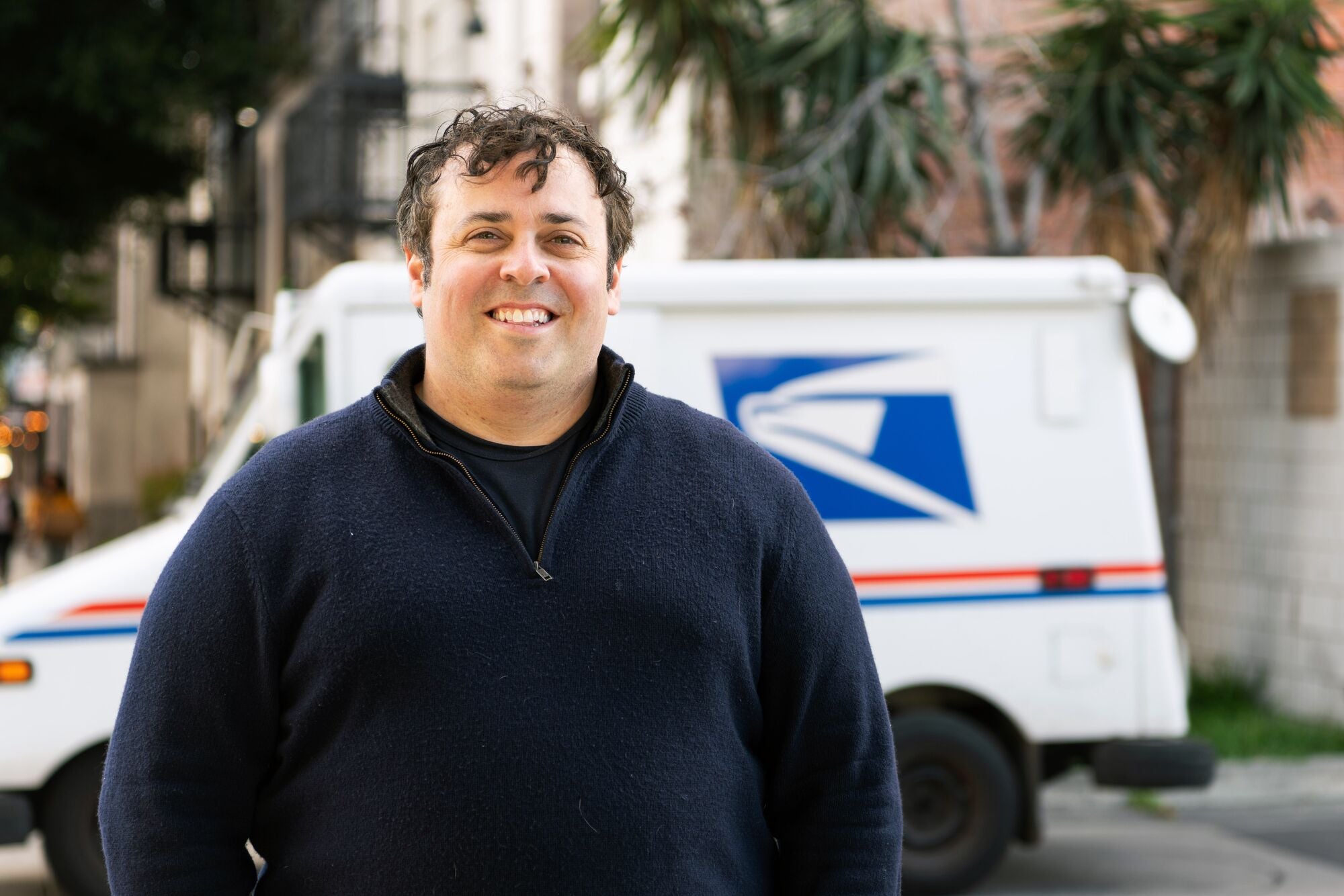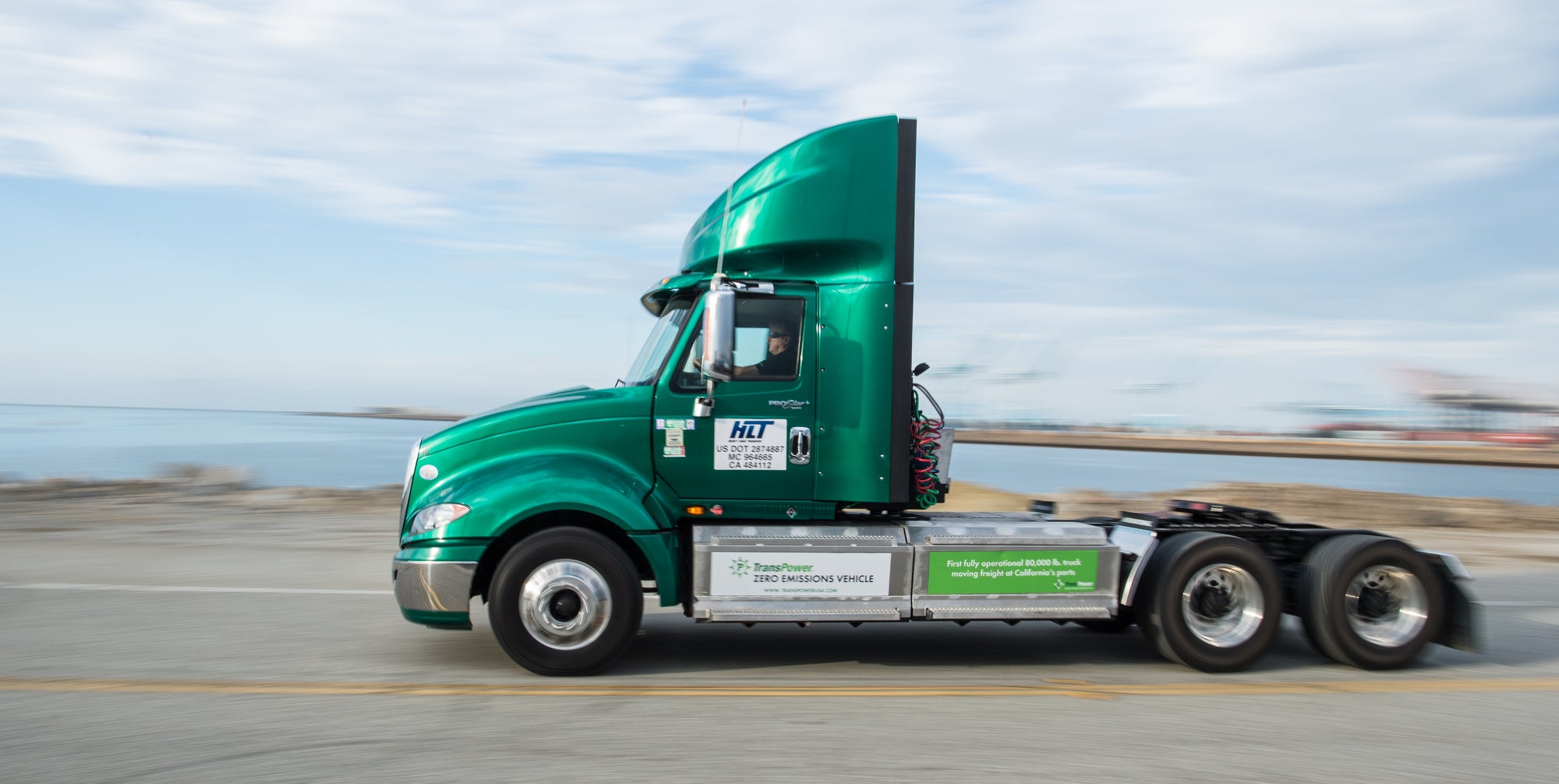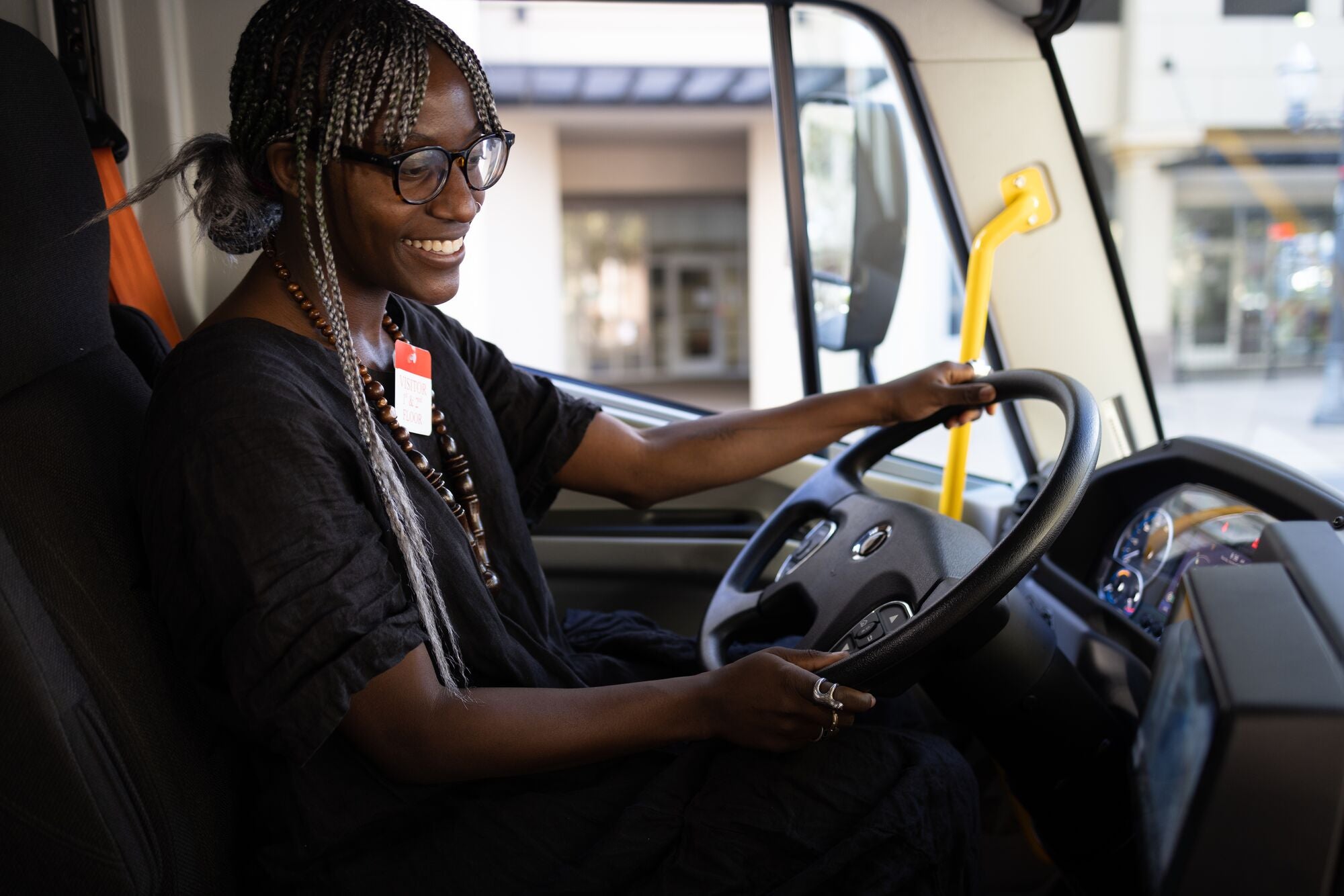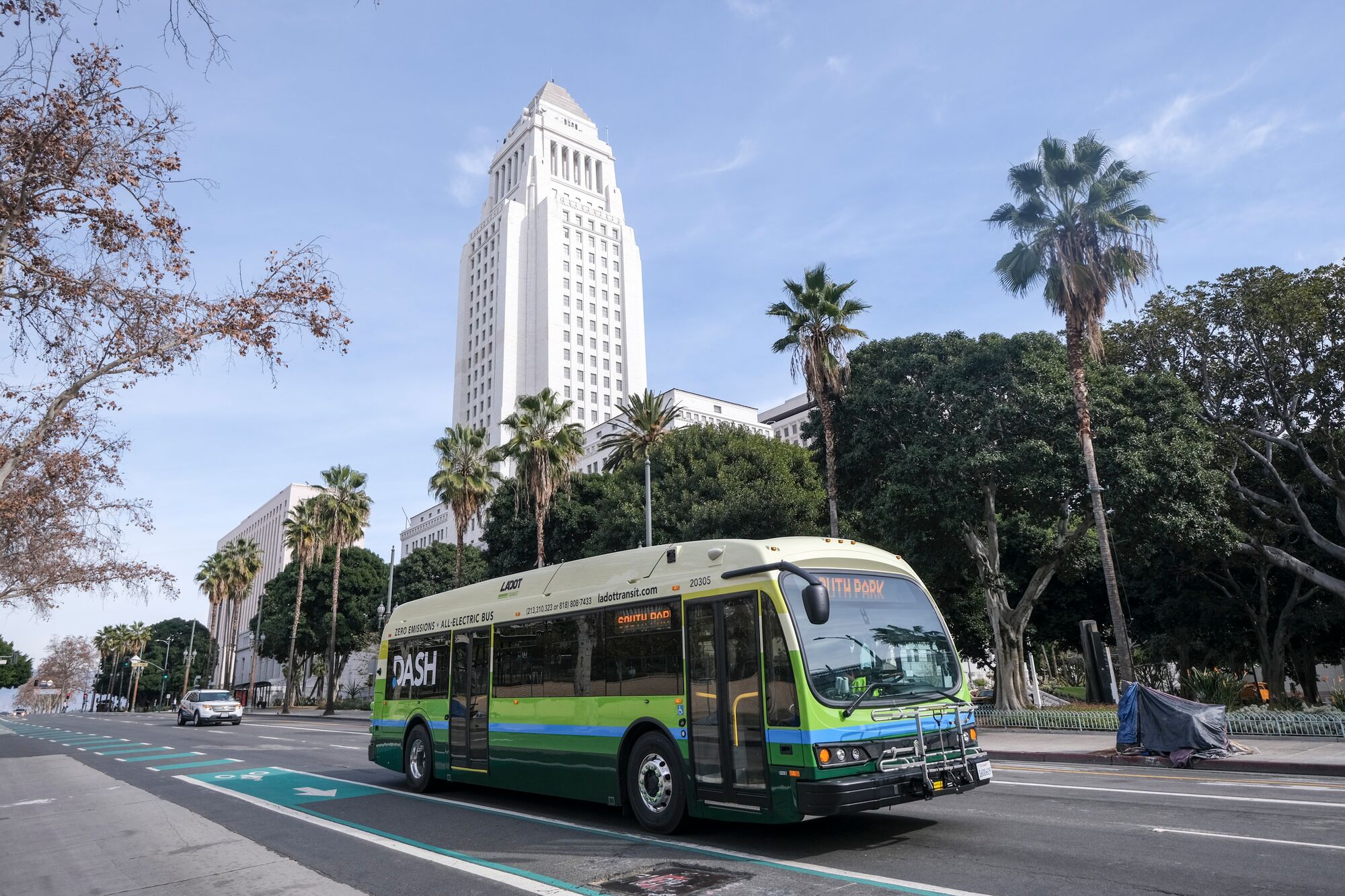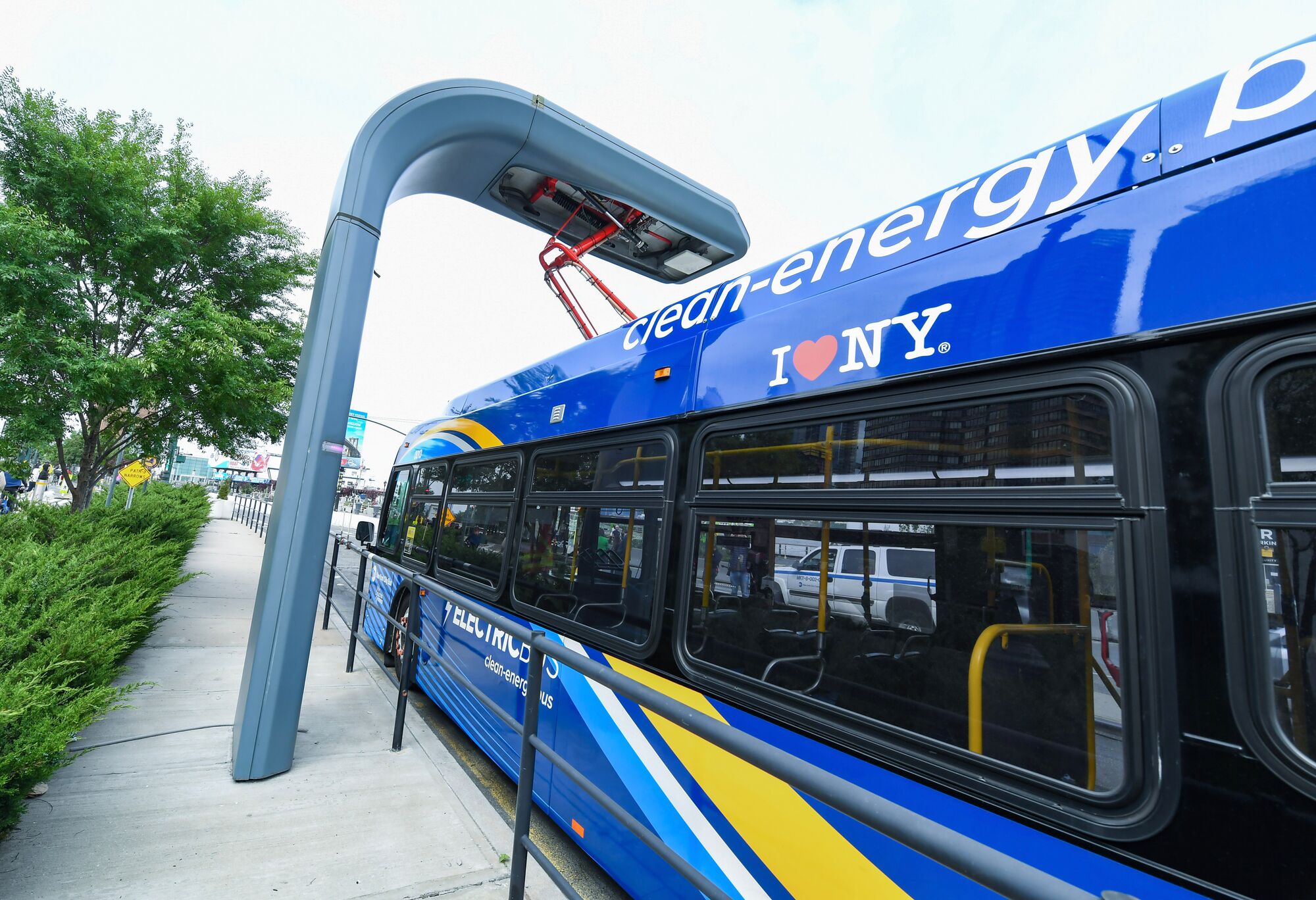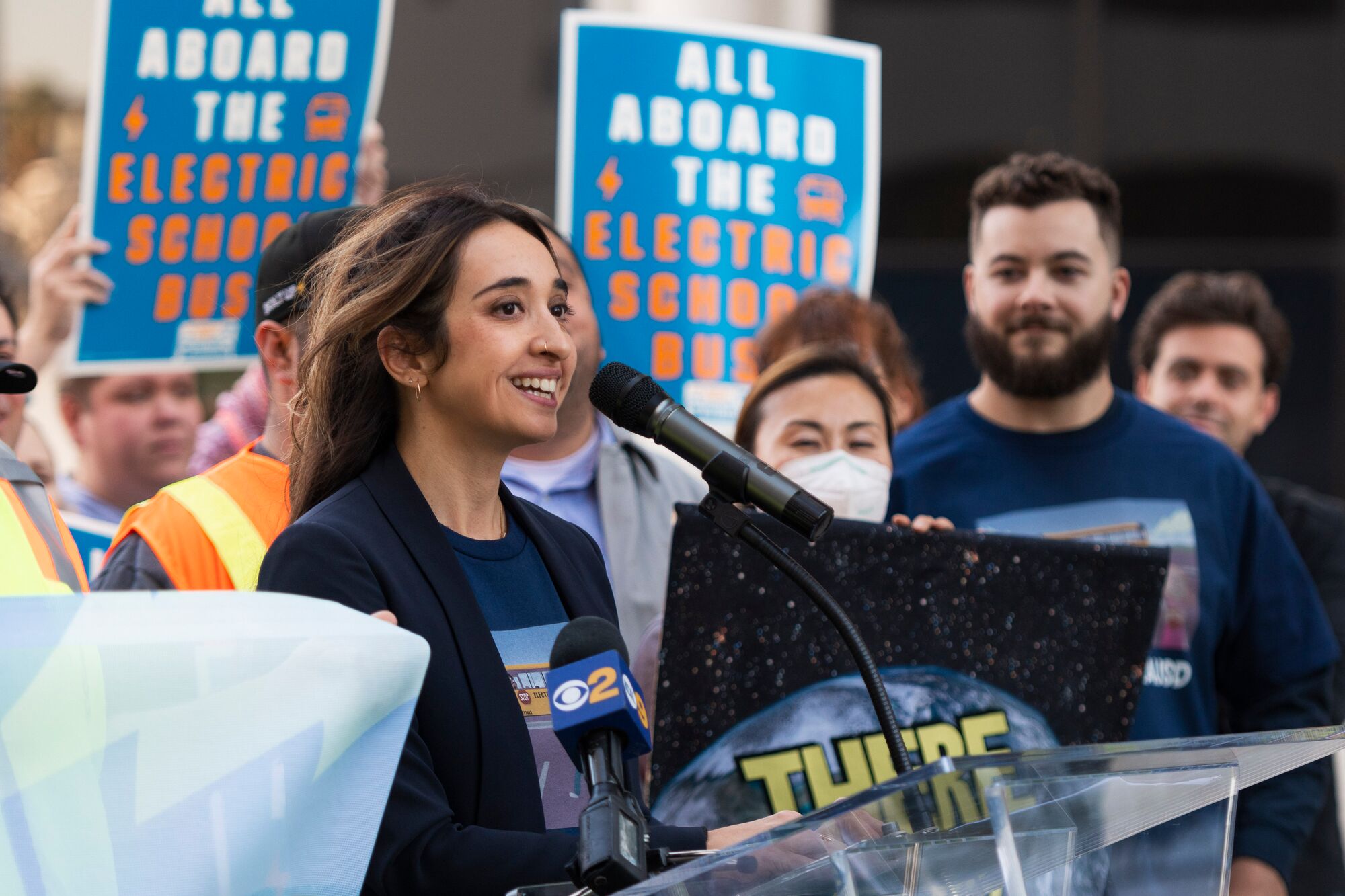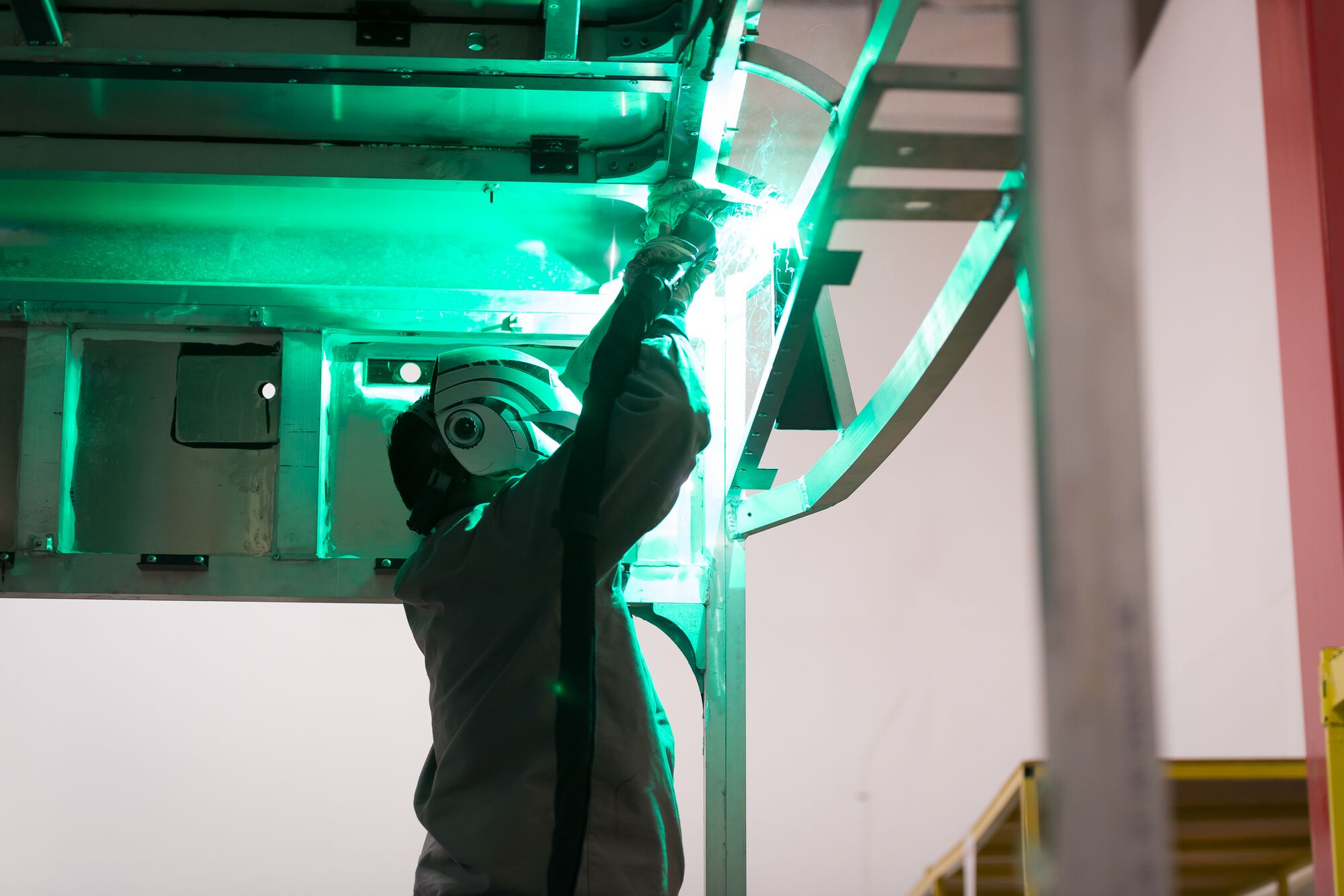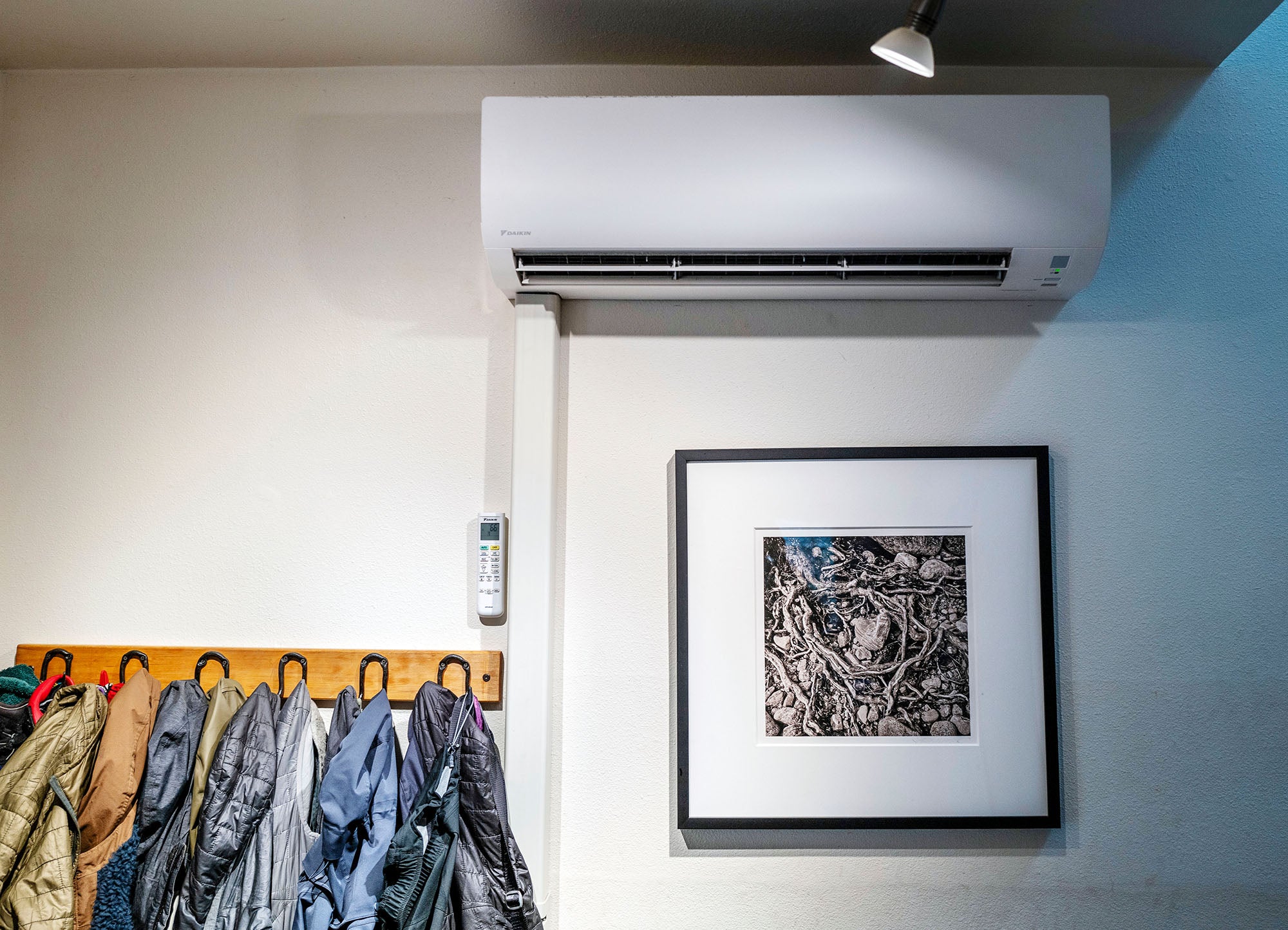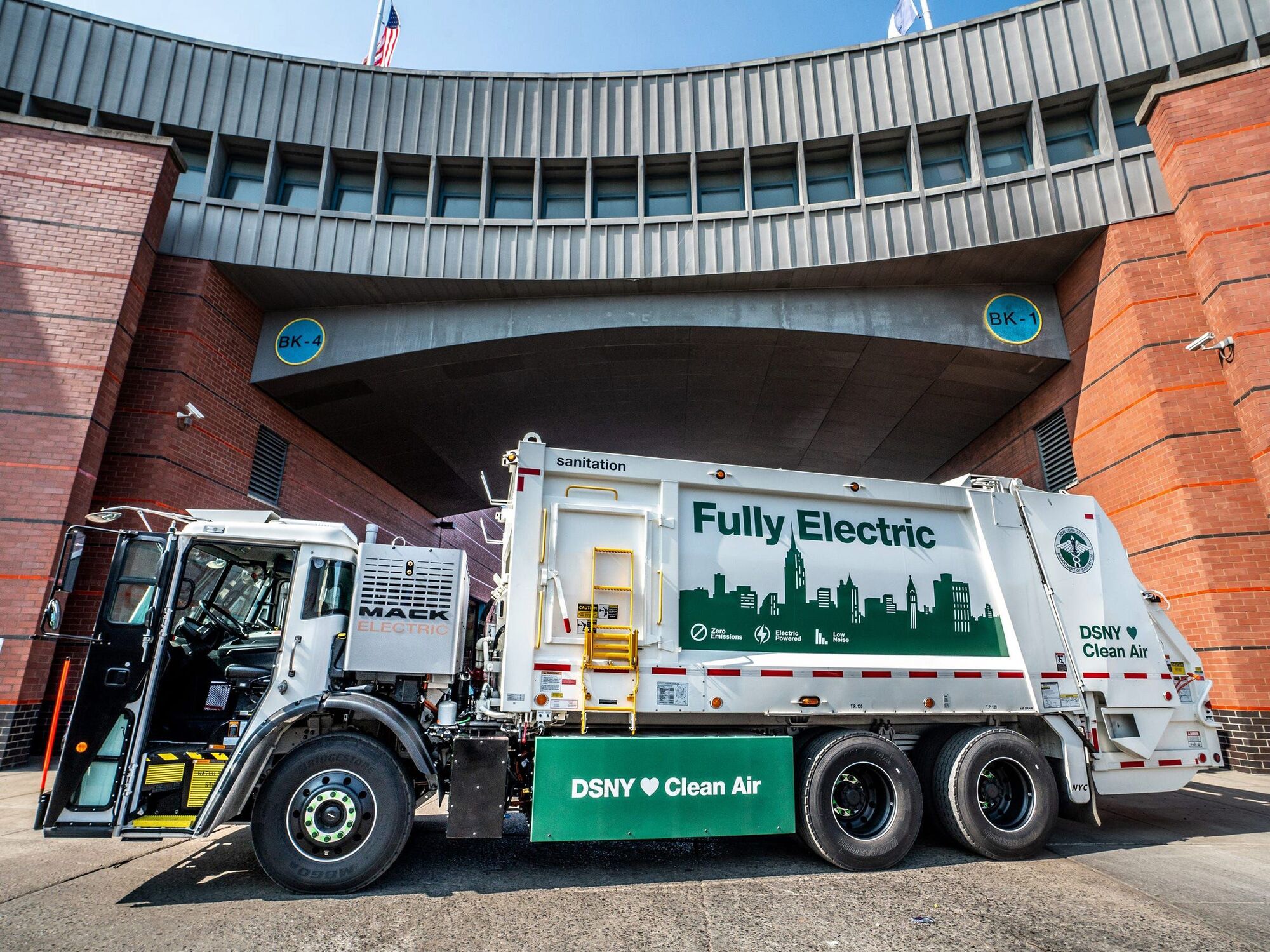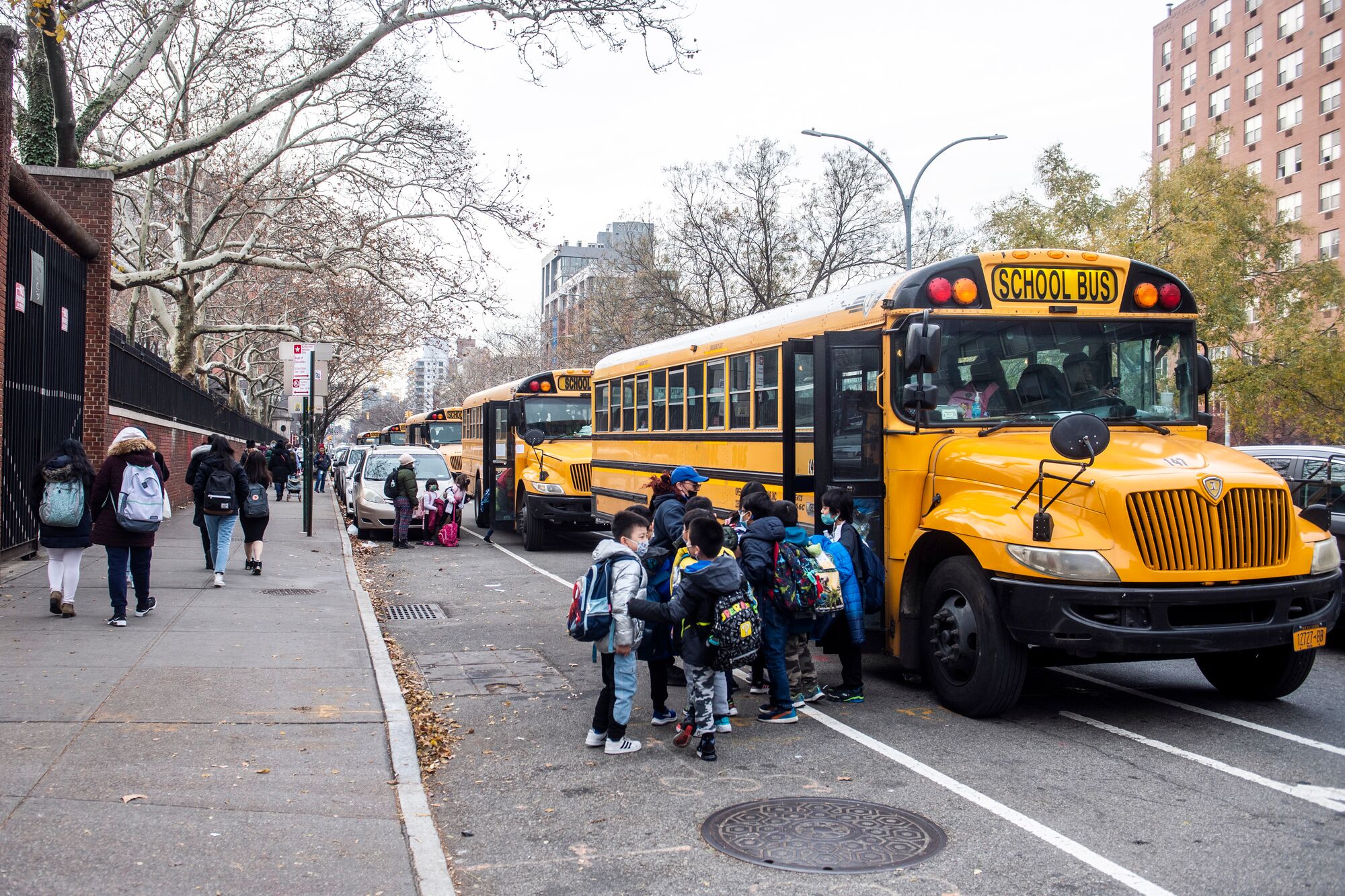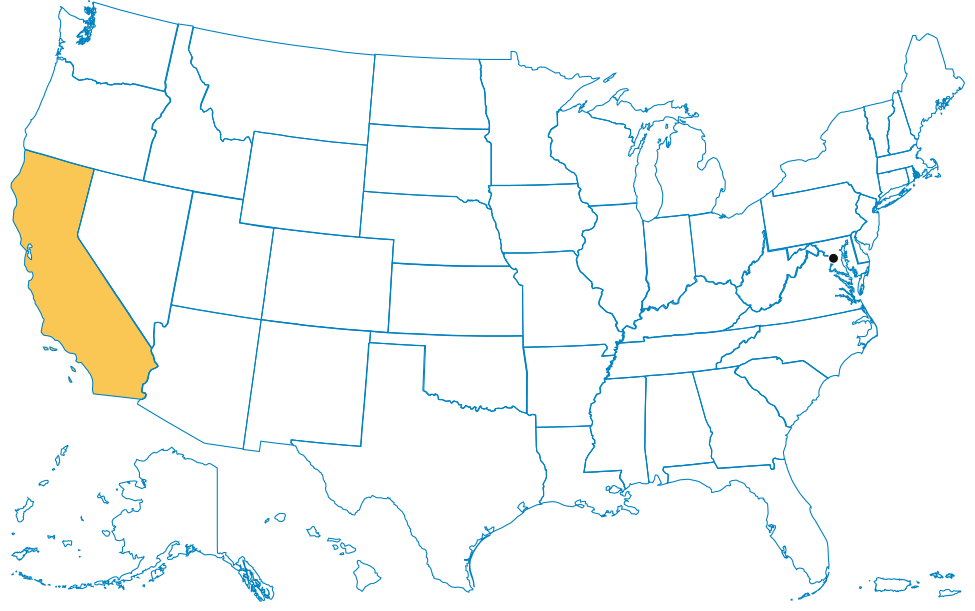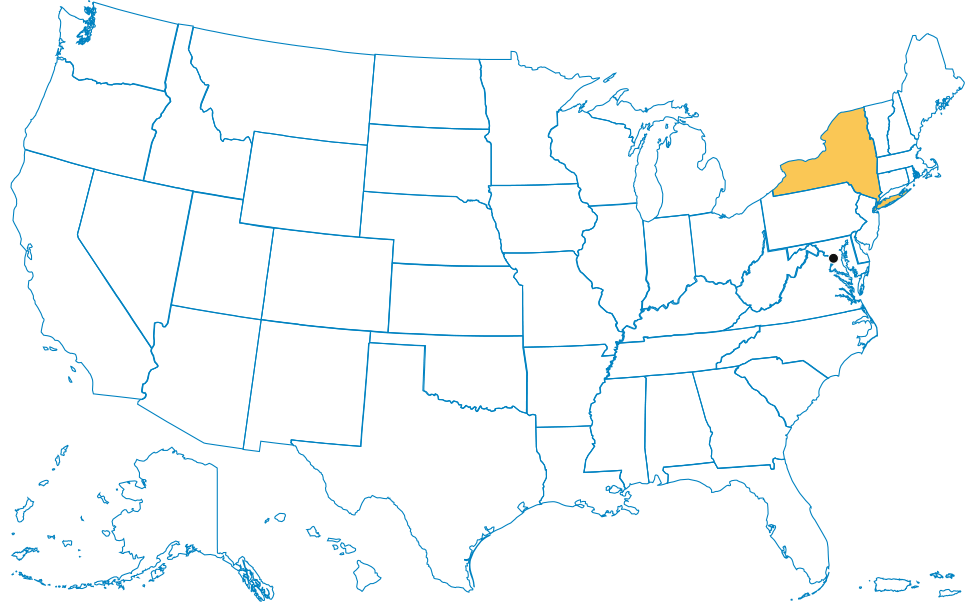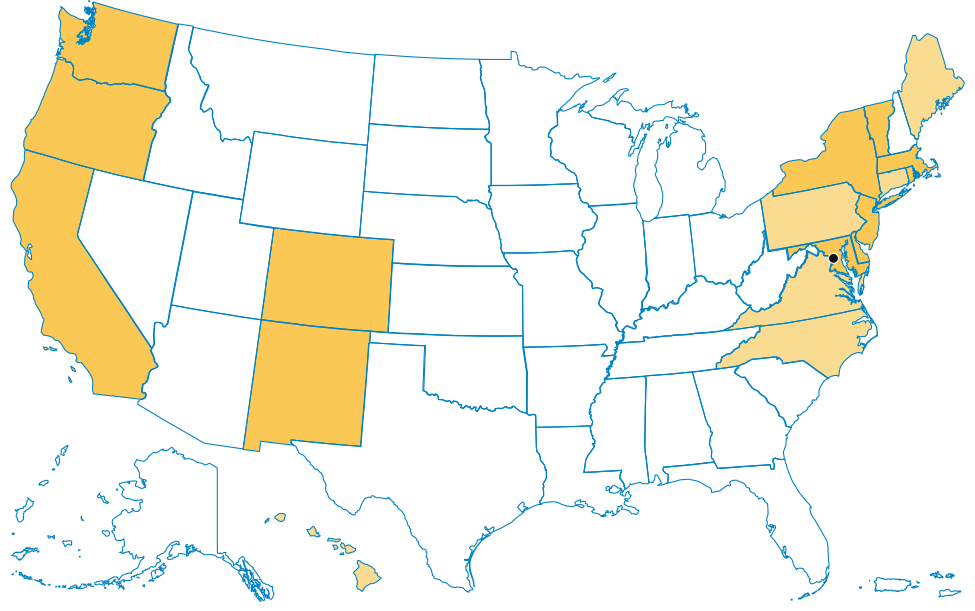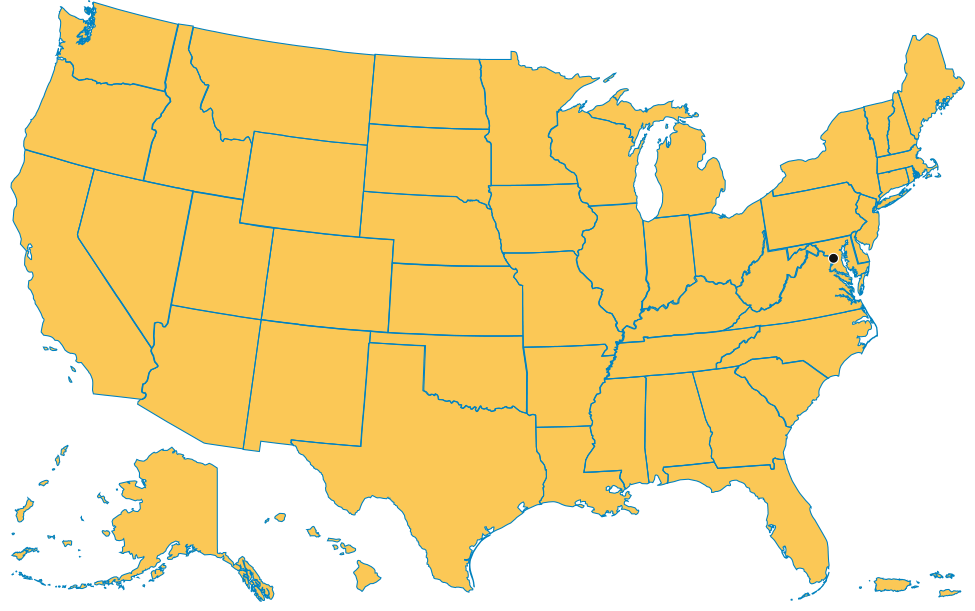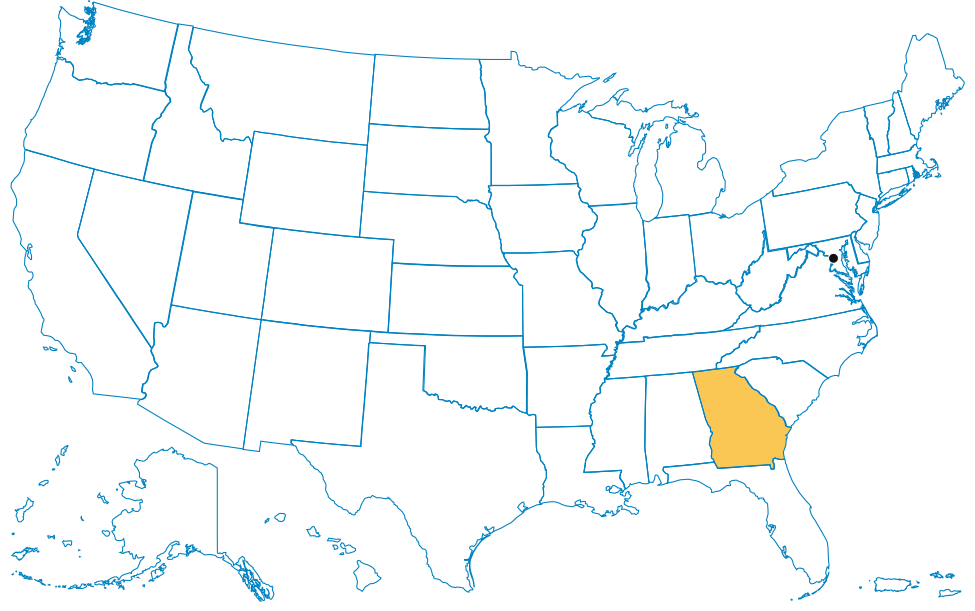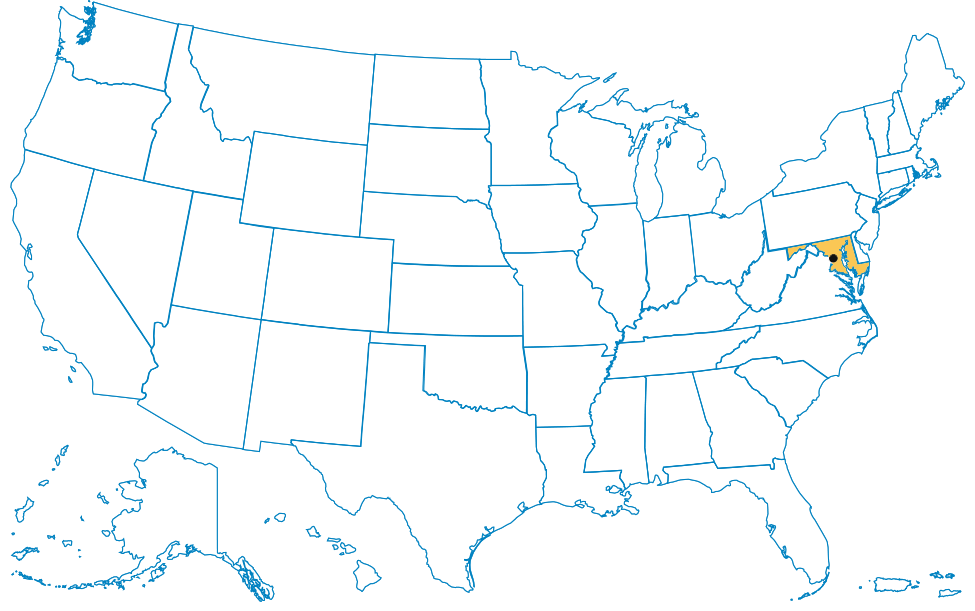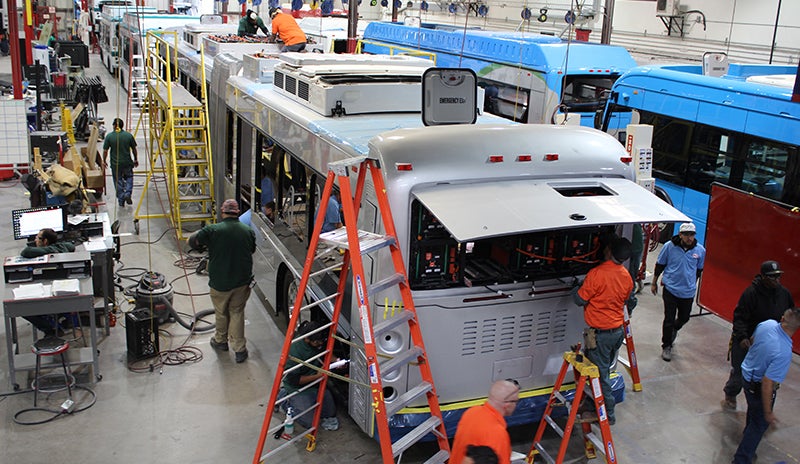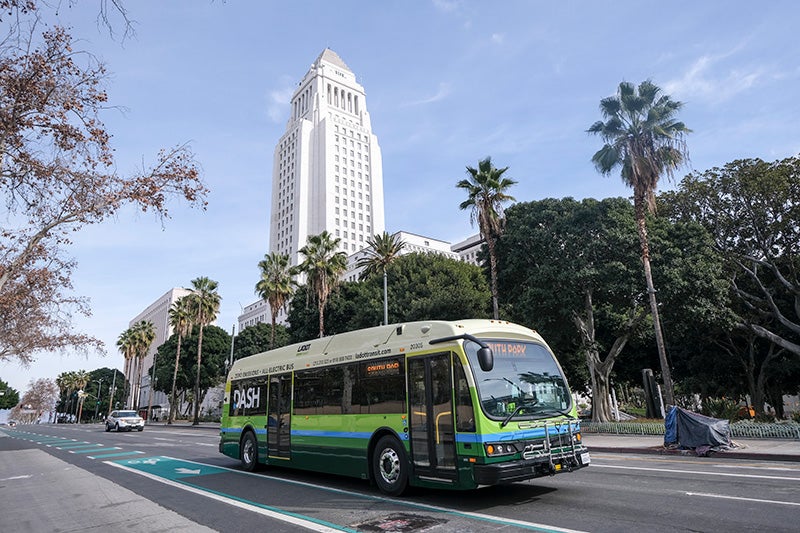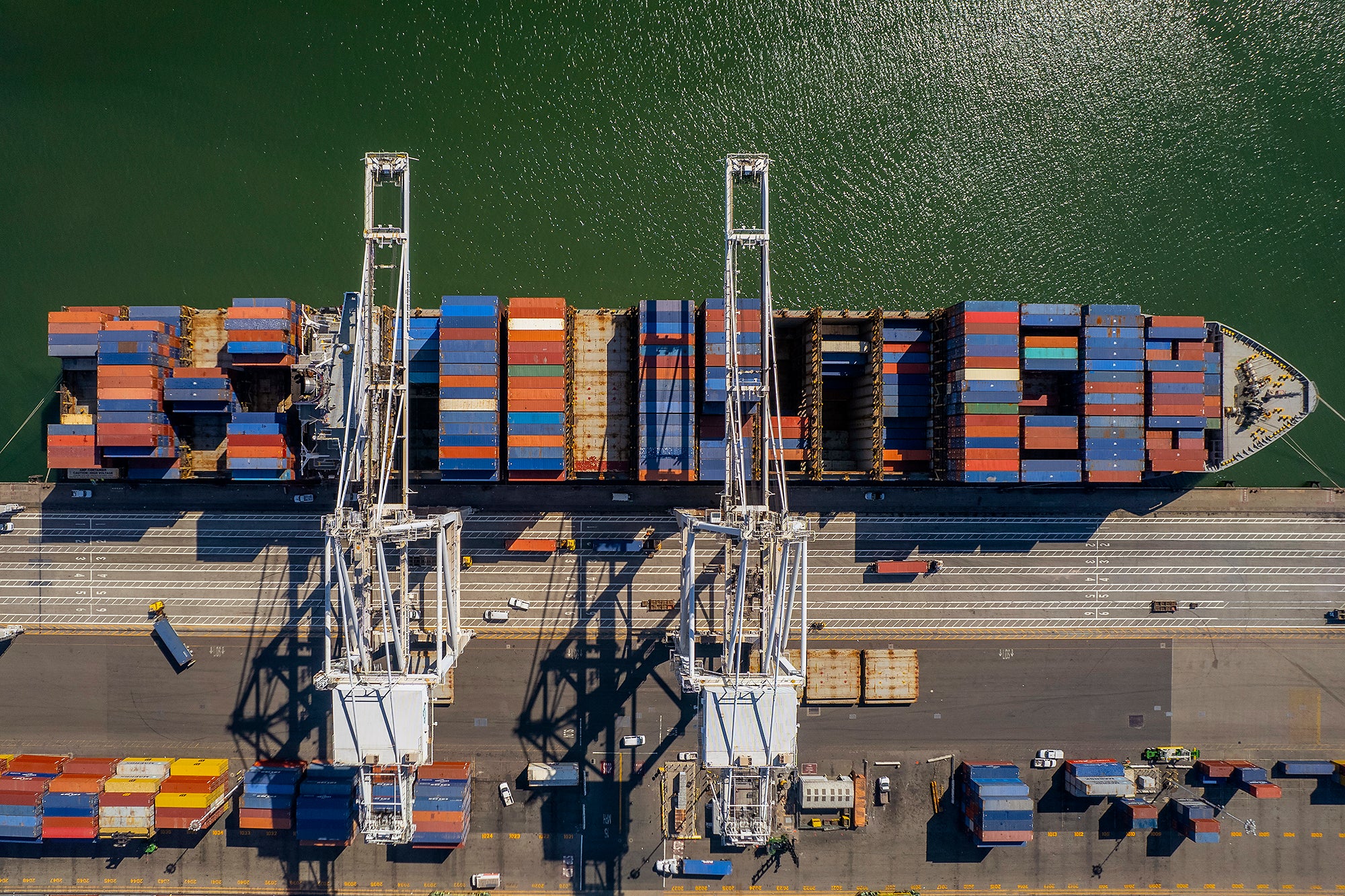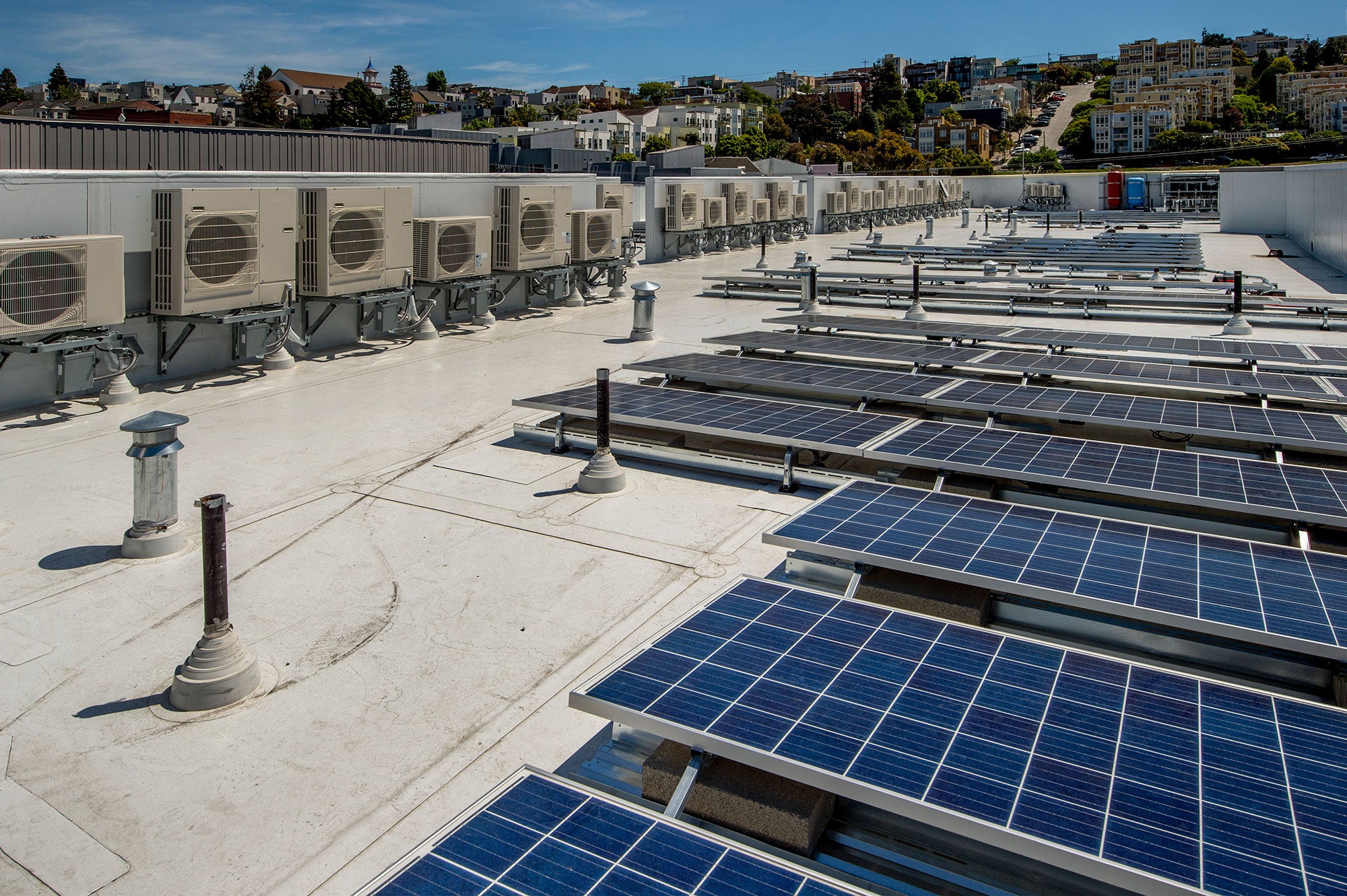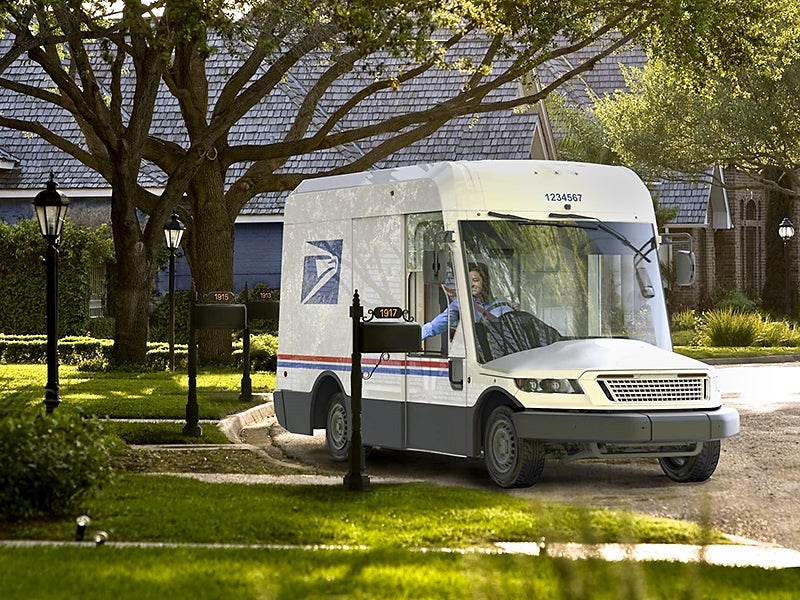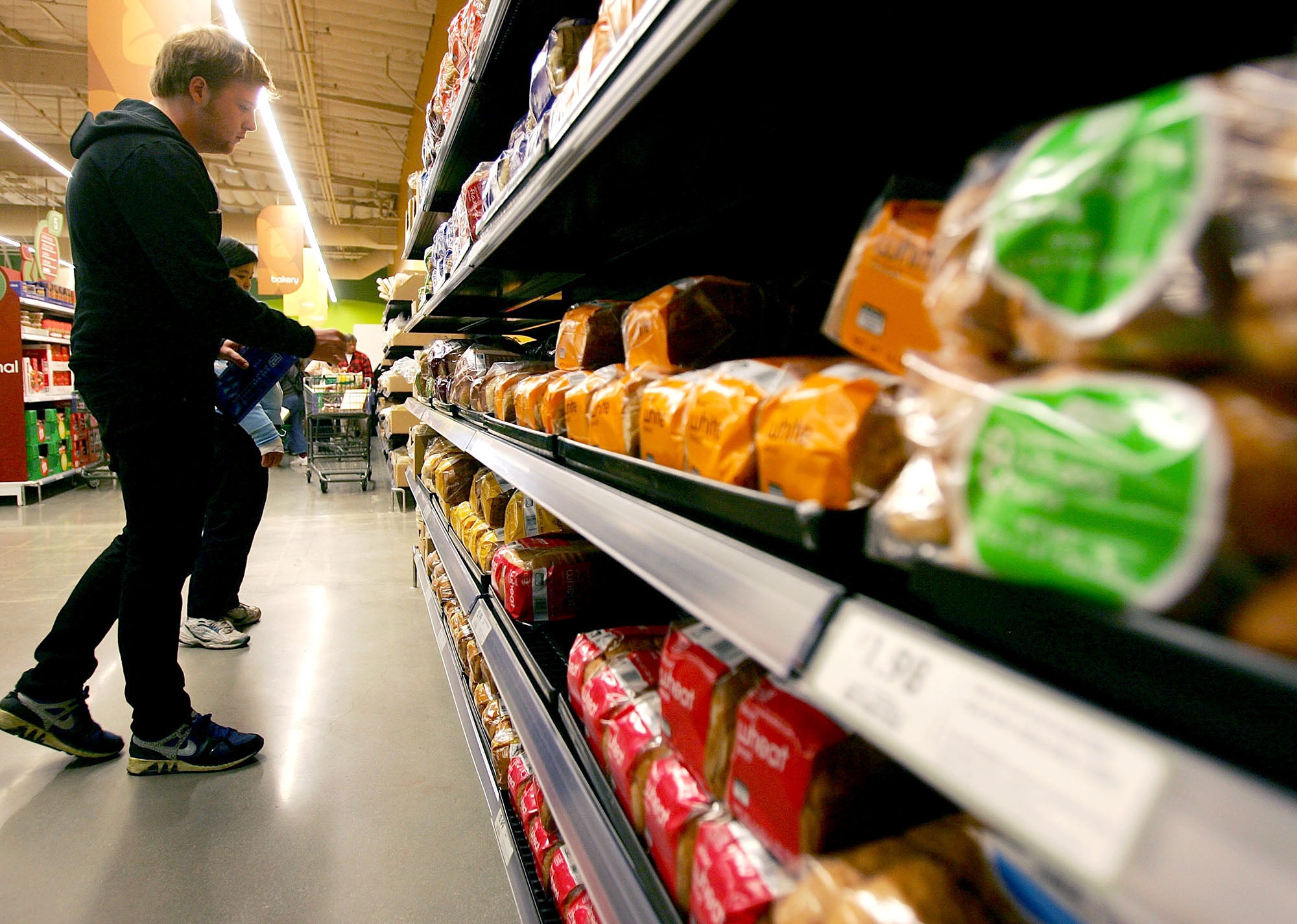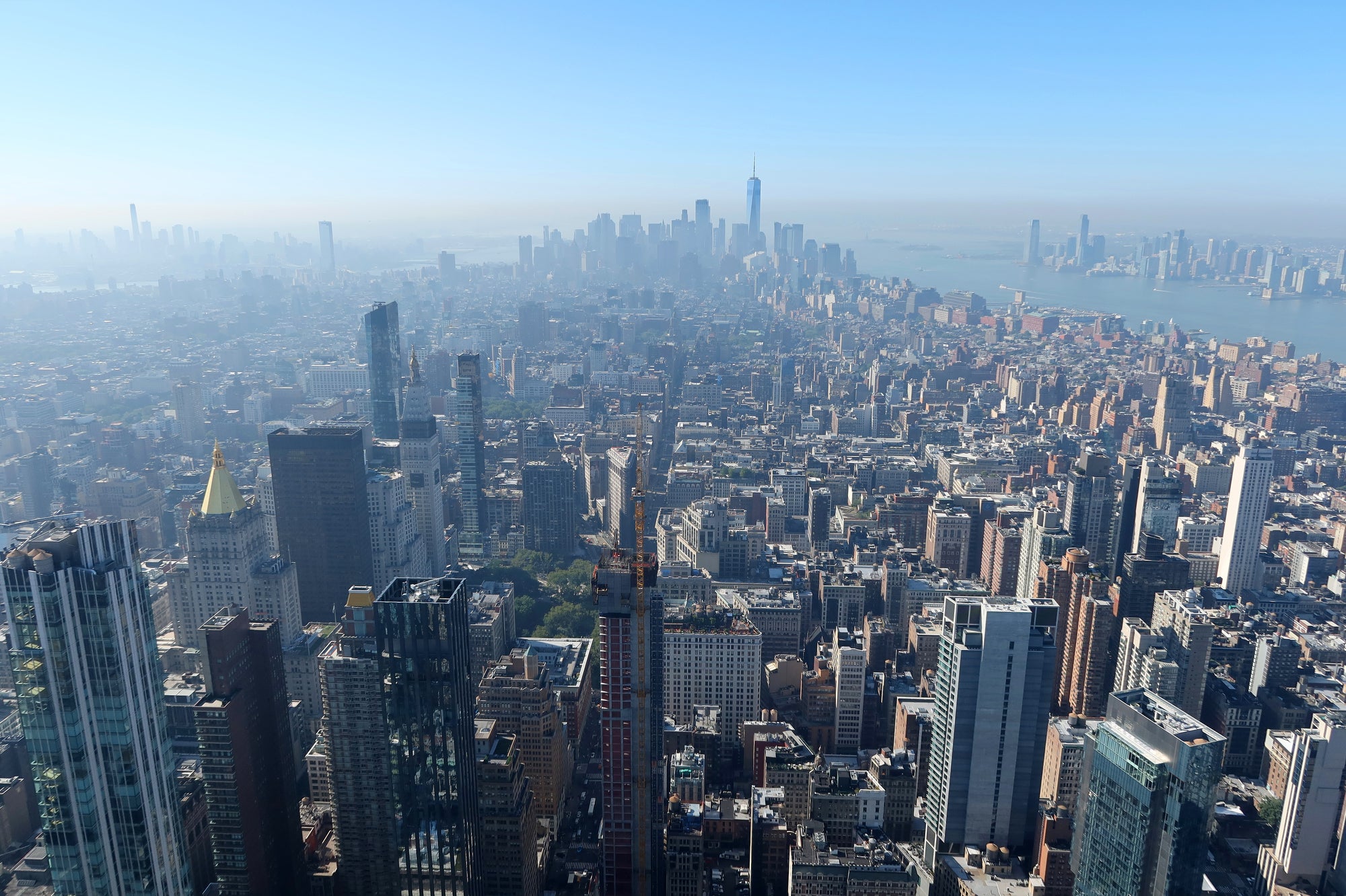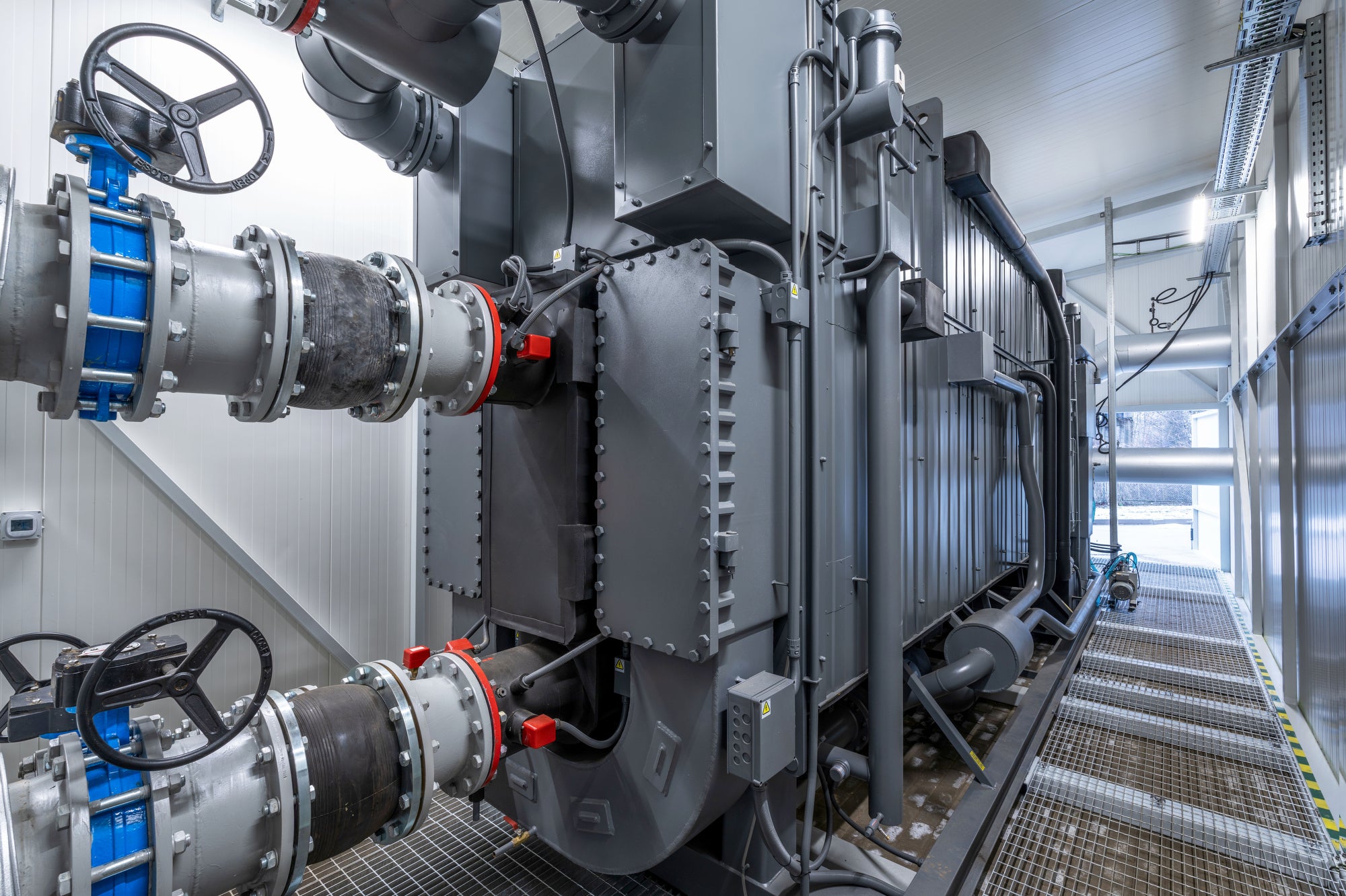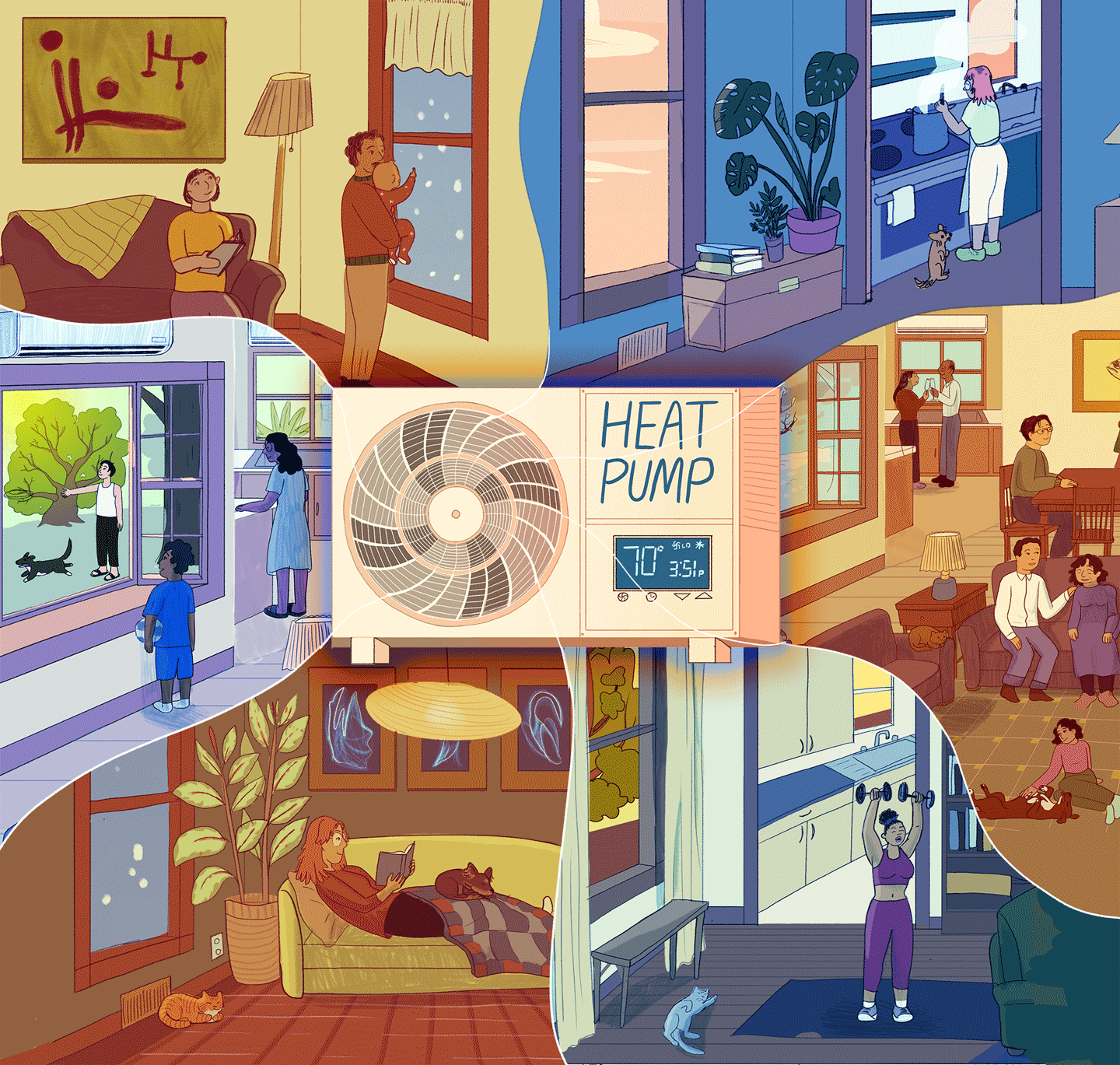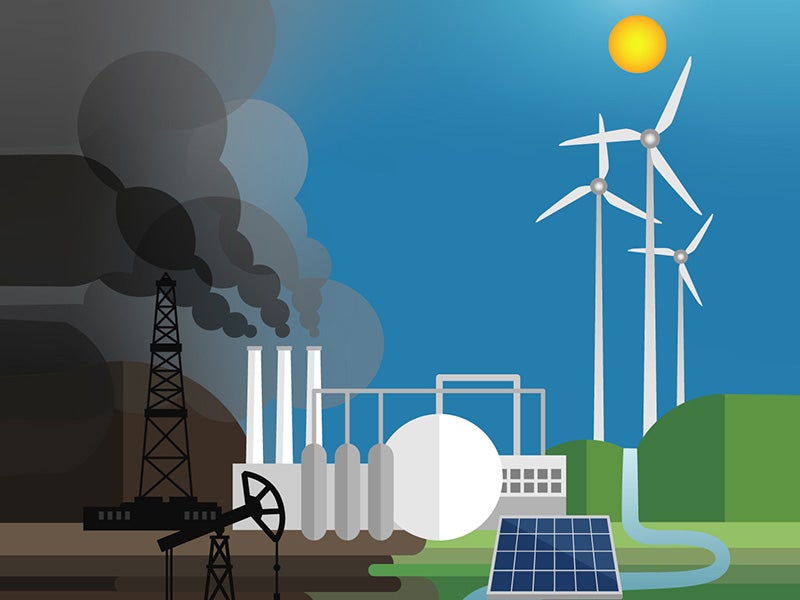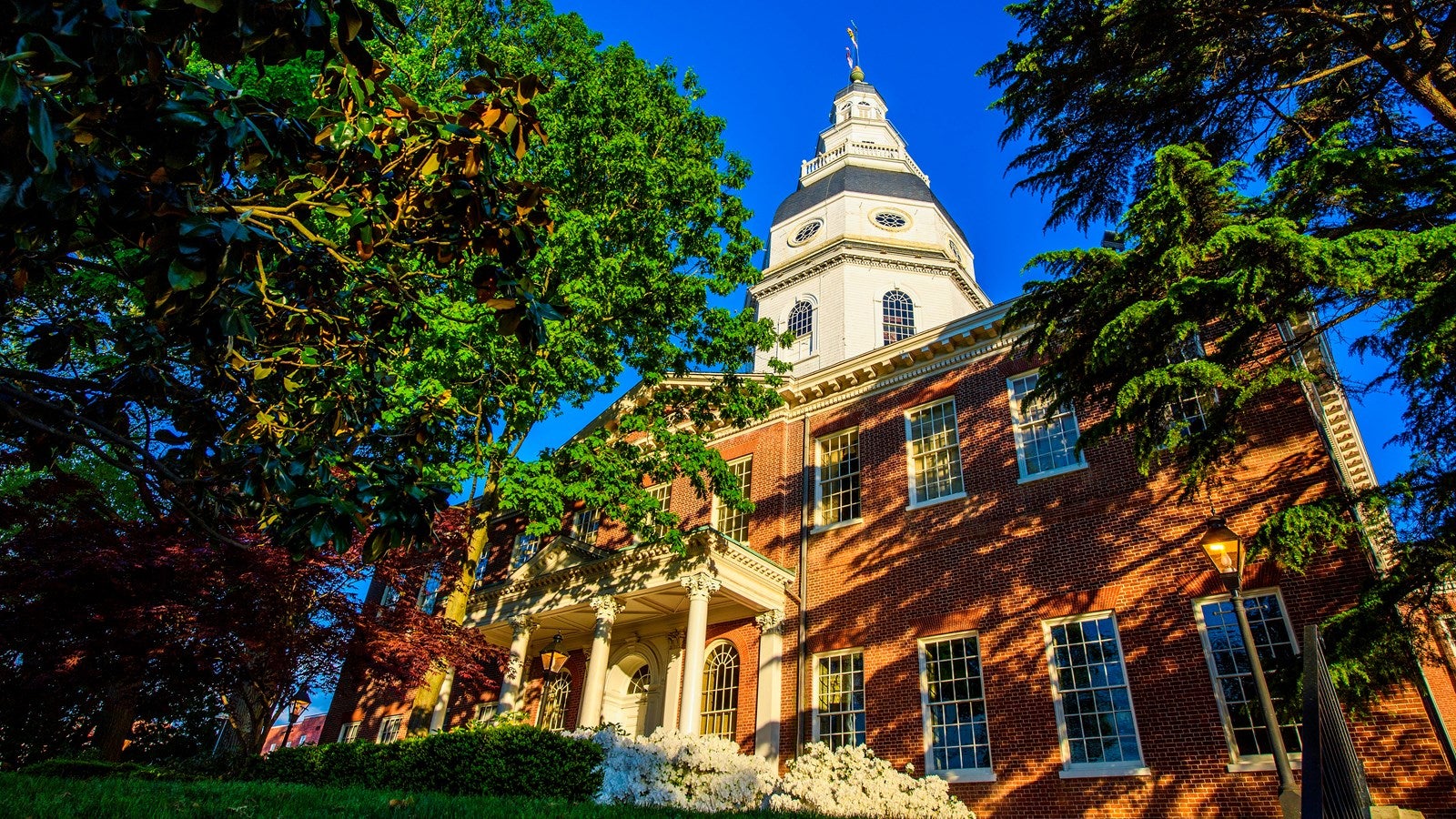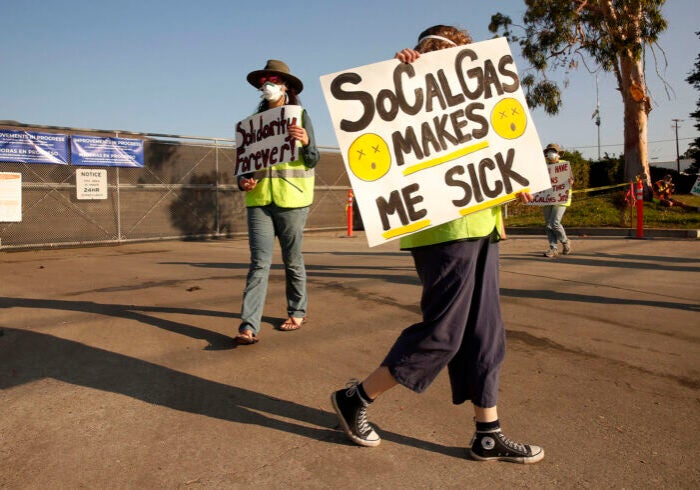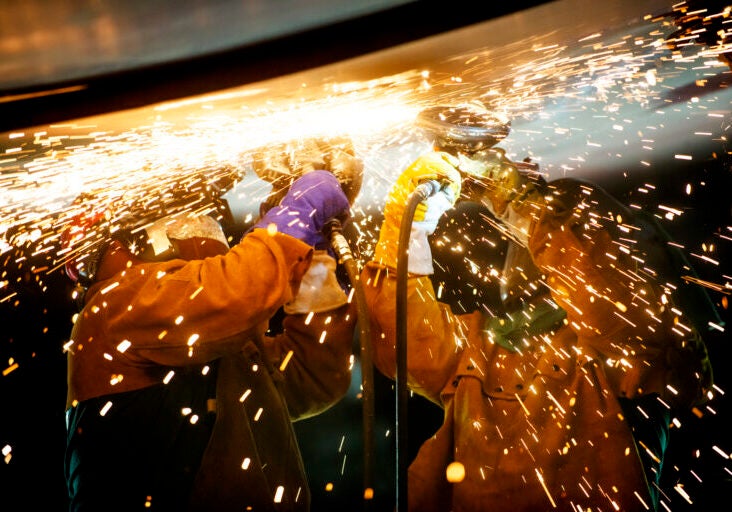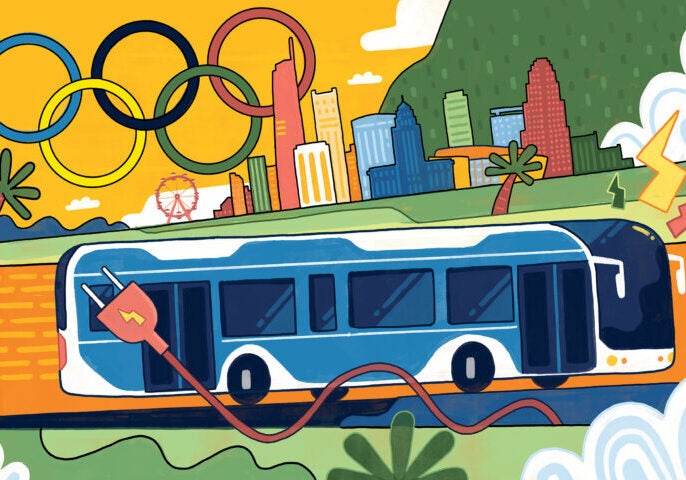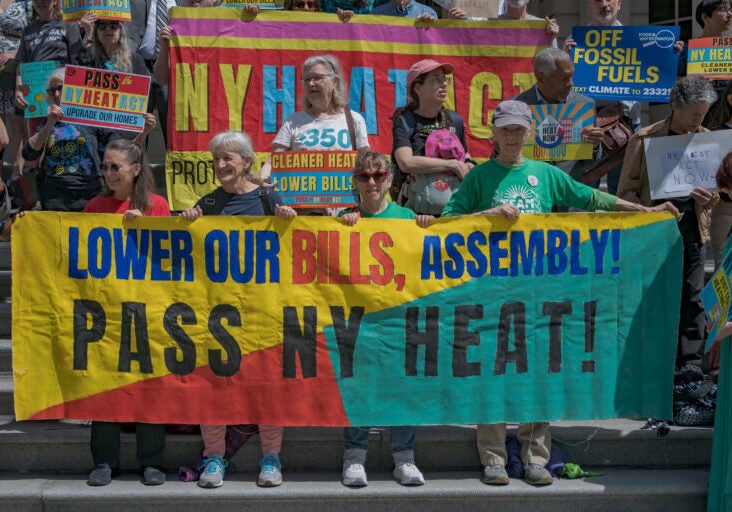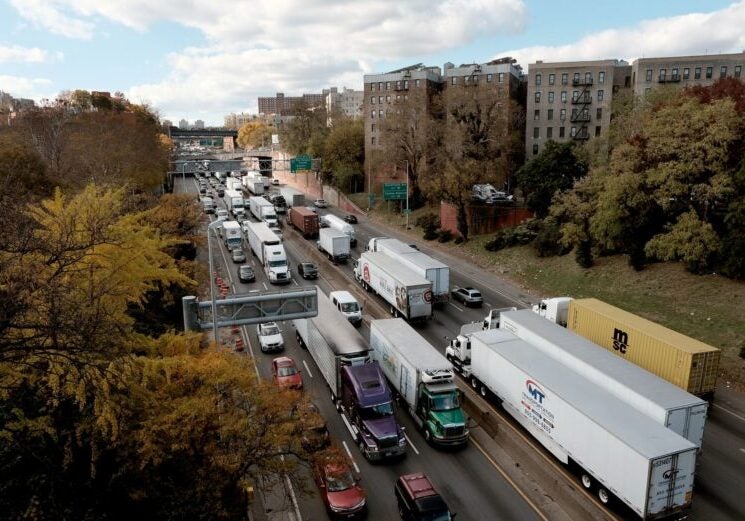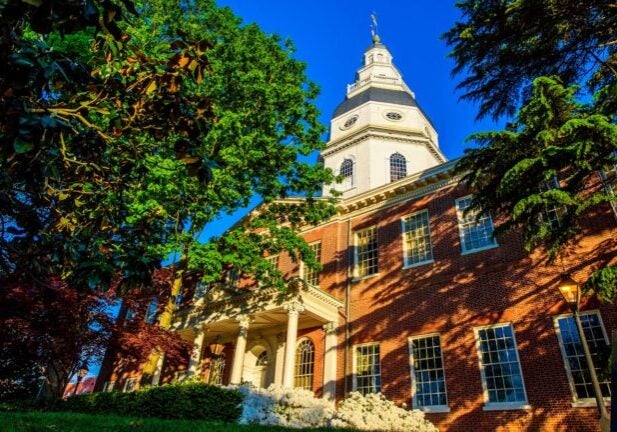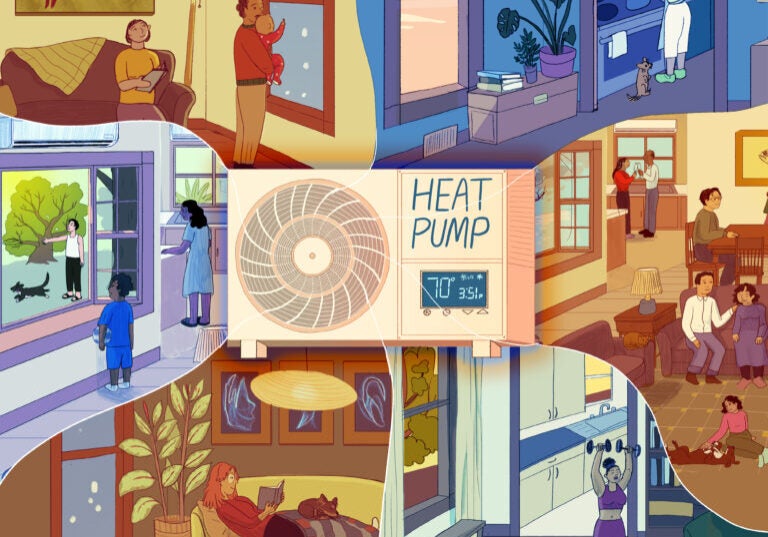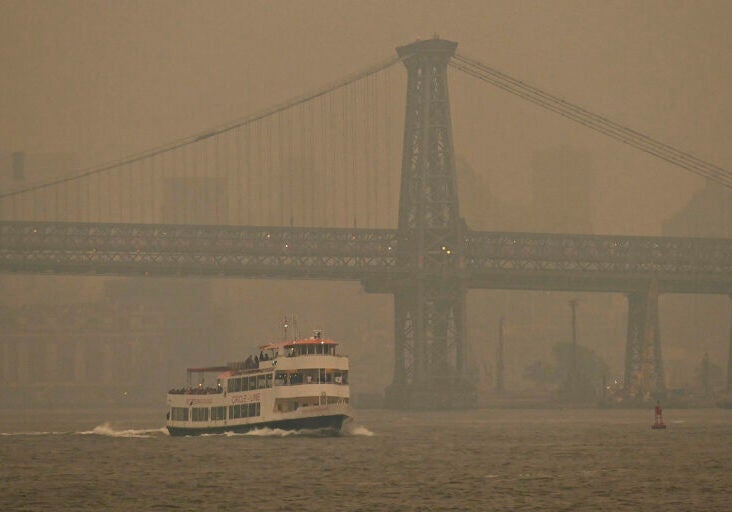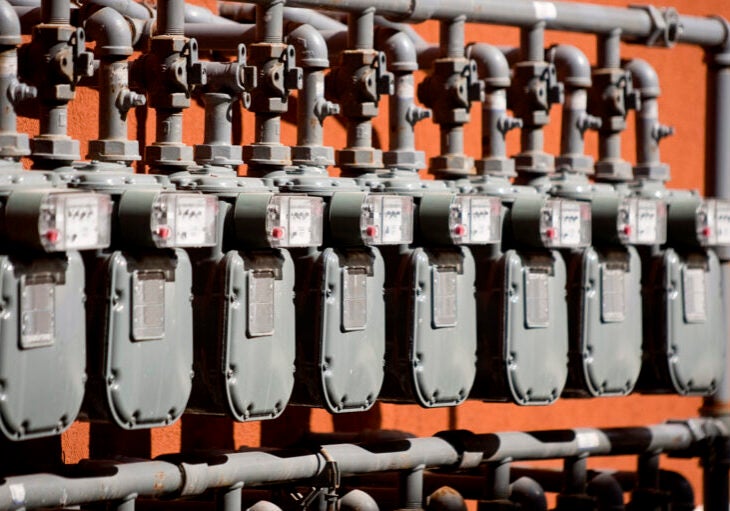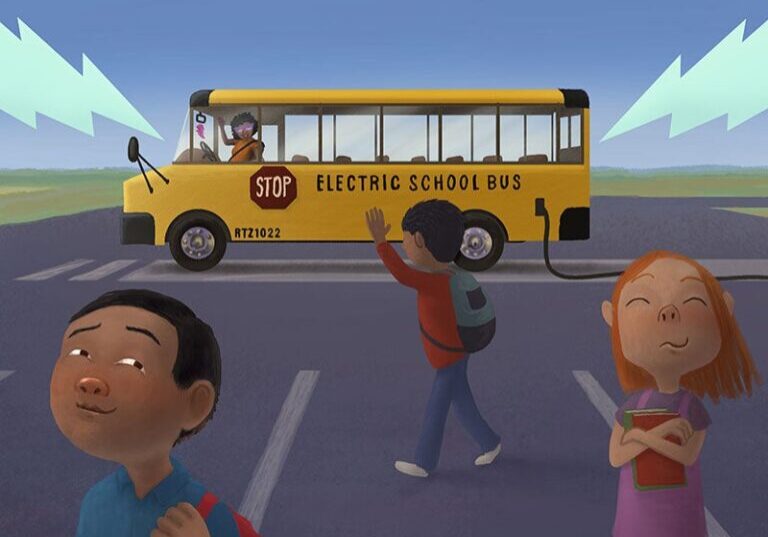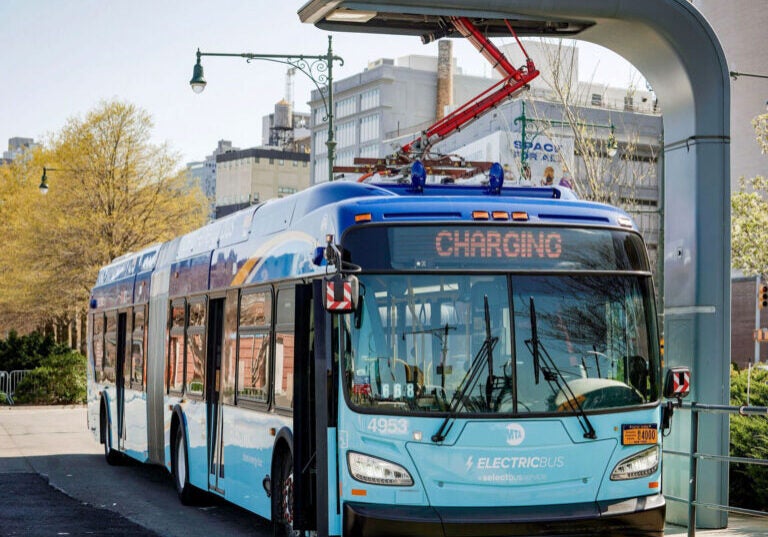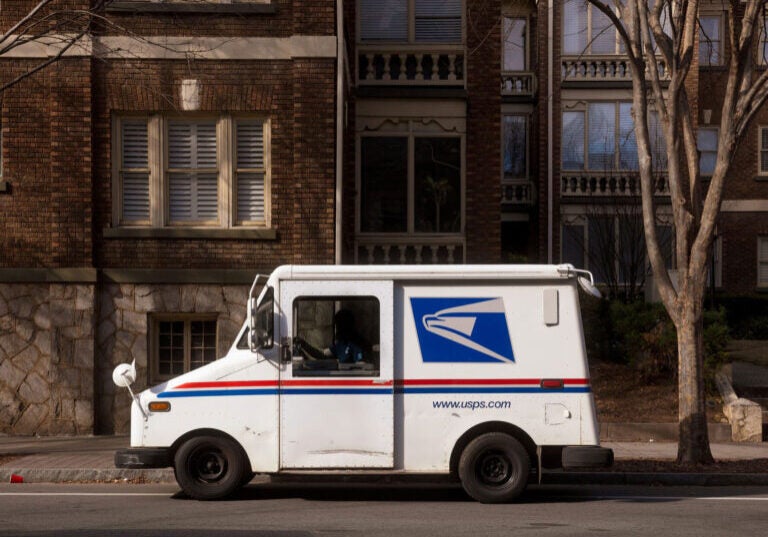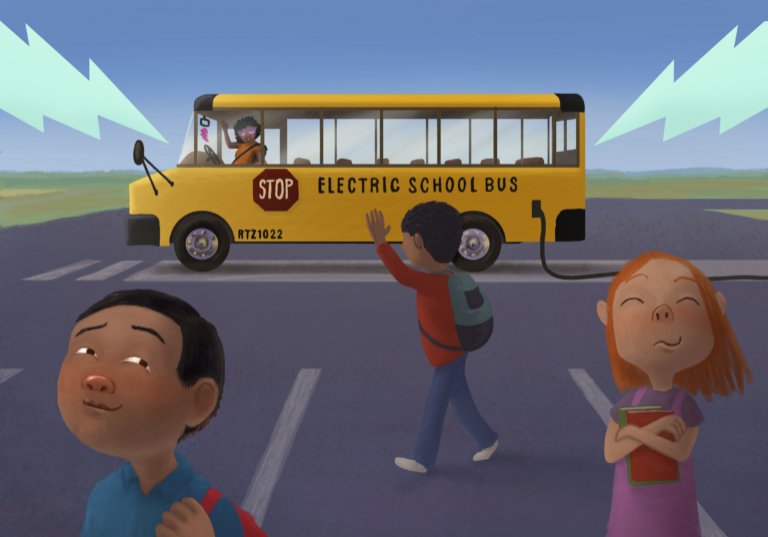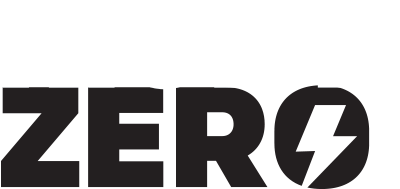
For the sake of our lungs and our climate, it’s time to build the future we want.

James Olstein for Earthjustice
To tackle our climate and air pollution challenges, we have to electrify everything and power it all with 100% renewable energy.
A transition that once seemed impossible even a decade ago is now reshaping our lives.
We are driving electrification everywhere from the buses, cars, and trucks on our streets, to the stoves, appliances, and heaters in our homes, and the boilers, ovens, and dryers in our factories.
To tackle our climate and air pollution challenges, we have to electrify everything and power it all with 100% renewable energy.
A transition that once seemed impossible even a decade ago is now reshaping our lives.
We are driving electrification everywhere from the buses, cars, and trucks on our streets, to the stoves, appliances, and heaters in our homes, and the boilers, ovens, and dryers in our factories.
Altogether, dirty combustion in our transportation sector, our buildings, the industrial sector, and our power sector pumps out an astounding 89% of the U.S.’s greenhouse gas emissions.
For the sake of our lungs and our climate, it’s time to build the future we want.
89%
U.S. Greenhouse Gas Emissions
The Right To Zero campaign — first launched in California in 2017, and since expanded to New York, the D.C. region, and beyond — is working to accelerate this clean energy, clean air transition. From cars and buses to kitchens and living rooms, from industrial plants to ports and our power grid, the change has begun, and we’ll all feel the benefits.
May 2018
San Francisco commits to electrifying its public transit buses by 2025.
California approves a blueprint to invest nearly $1 billion in charging infrastructure for electric vehicles large and small.
August 2018
California passes SB 100, new legislation to shift the state’s entire energy grid to 100% clean energy by 2045.
December 2018
California passes the Innovative Clean Transit Rule to electrify all public transit buses in the state by 2040.
July 2019
New York passes its landmark climate law, reducing emissions and steering the state towards electrification that runs on clean energy.
June 2020
California passes the Advanced Clean Trucks rule, the first zero emissions trucks rule in the nation. (As of Jan. 2024, adopted by 10 states, with another 7 states agreeing to adopt.)
August 2020
California passes the At-Berth Rule, shifting polluting ships to plugging into shoreside electricity, rather than running on diesel and bunker fuel.
April 2021
A lawsuit against the largest proposed warehouse project in the world results in a $47 million settlement to electrify its operations in Southern California.
May 2021
Southern California passes the Warehouse Indirect Source Rule to electrify mega warehouses.
August 2021
California passes the nation’s first building code that establishes electric heat pumps as baseline technology for buildings.
March 2022
California adopts the Commercial Harbor Craft rule to electrify ferries, tugboats, and harbor boats.
August 2022
California adopts the Advanced Clean Cars II regulation, shifting all car sales in the state to zero emissions by 2035. (As of Jan. 2024, adopted by 11 additional states.)
September 2022
California ends subsidies for new methane gas lines to homes as it eyes an electric future and climate-friendly construction.
December 2022
The U.S. Postal Service commits electrify most of its new mail truck fleet.
March 2023
The San Francisco Bay Area passes a first-in-the-nation regulation to shift all appliance sales to zero emissions between 2027 and 2031.
April 2023
California passes the In-Use Locomotive Rule to shift all rail operating in the state to zero emissions.
April 2023
California passes the Advanced Clean Fleets rule, the state’s second zero emissions trucks rule.
May 2023
New York passes the All Electric Buildings Act, the first state legislation to shift all new buildings to zero emissions appliances.
July 2023
Southern California adopts a first-in-the-nation rule to electrify food manufacturing.
May 2024
D.C. passes the Healthy Homes Act to help all residents upgrade to all-electric appliances.
September 2024
The first all-electric USPS trucks hit the road in Georgia.
California Governor Gavin Newsom signs first-of-its-kind law to spur neighborhood-scale building electrification.
October 2024
The Environmental Protection Agency awards $3 billion in funds to electrify ports around the country.
January 2025
New York kicks off its congestion pricing program, enabling the city to purchase 265 new zero-emissions buses.
February 2025
The Long Beach City Council votes to electrify 100% of the city’s garbage trucks.
March 2025
A federal court dismisses challenges to a New York City law phasing out gas in buildings, allowing the city to move forward to electrify its buildings.
April 2025
Maryland passes a bundle of new laws that lower energy costs, rein in data centers, and help Maryland achieve its clean energy goals.
June 2025
New York state legislators repeal outdated “100-foot rule,” which had required New Yorkers to pay for the build-out of new gas pipelines in their utility bills.
July 2025
A federal court upholds landmark Southern California rule advancing zero-emissions water heaters and boilers.
A federal court upholds New York's all-electric new buildings law, saving New Yorkers money and cutting climate pollution.
We won’t just imagine a zero-emissions future. We’re already building it.
We have a right to zero emissions, and we’re ready.
Zero is here.
Zero emissions technology is here today. We don’t need to wait. The biggest hurdle we face is political paralysis that favors the old, polluting ways of doing things.
Zero means good health.
Burning fossil fuels is literally killing us. A 2021 Harvard study estimated that just the particulates in fossil fuel pollution kill over 10 million people worldwide each year. It’s time to give communities a breath of clean air.
Zero means jobs.
Clean energy jobs already outnumber fossil fuel jobs across the nation. From manufacturing to maintenance and installation, clean energy is growing family-sustaining jobs that will drive our economy.
Zero is for the earth.
The extreme weather we’ve seen lately, with lives and livelihoods turned upside down by wildfires, storms, floods, and droughts worsened by climate disruption, reminds us that we don’t have time to waste.
What does zero emissions look like?
This transition is about the public transit buses that move millions of people every day, the large trucks that would otherwise spew tons of toxic diesel fumes into the air, the mail trucks delivering mail in every neighborhood, and the school buses that take our kids to class. It’s rail and port transportation and all the ways we move people and goods around our communities and across our nation.
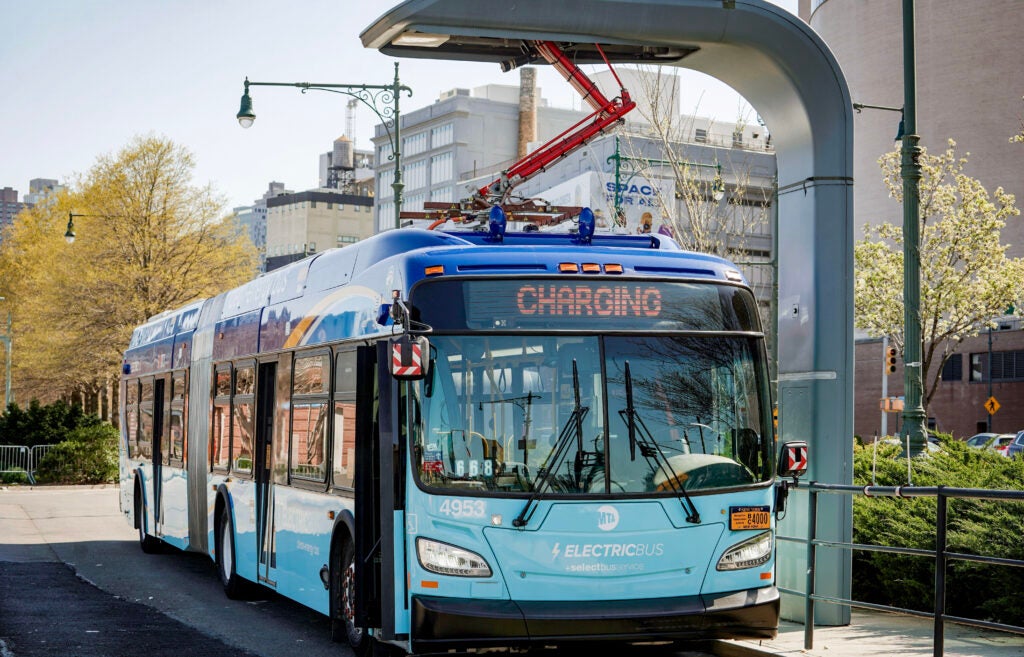
An electric bus at charging station in New York City. (Marc A. Hermann / MTA)
The Right To Zero campaign launched with a focus on electrifying public transit buses in California — first with a successful campaign urging LA Metro to commit to zero emissions buses, and then a statewide regulation to electrify all public transit buses. It's become critical for advocates to build bold and unrelenting campaigns that shape emerging regulations, as fossil fuel industry voices have increasingly turned their lobbying resources to these proceedings.
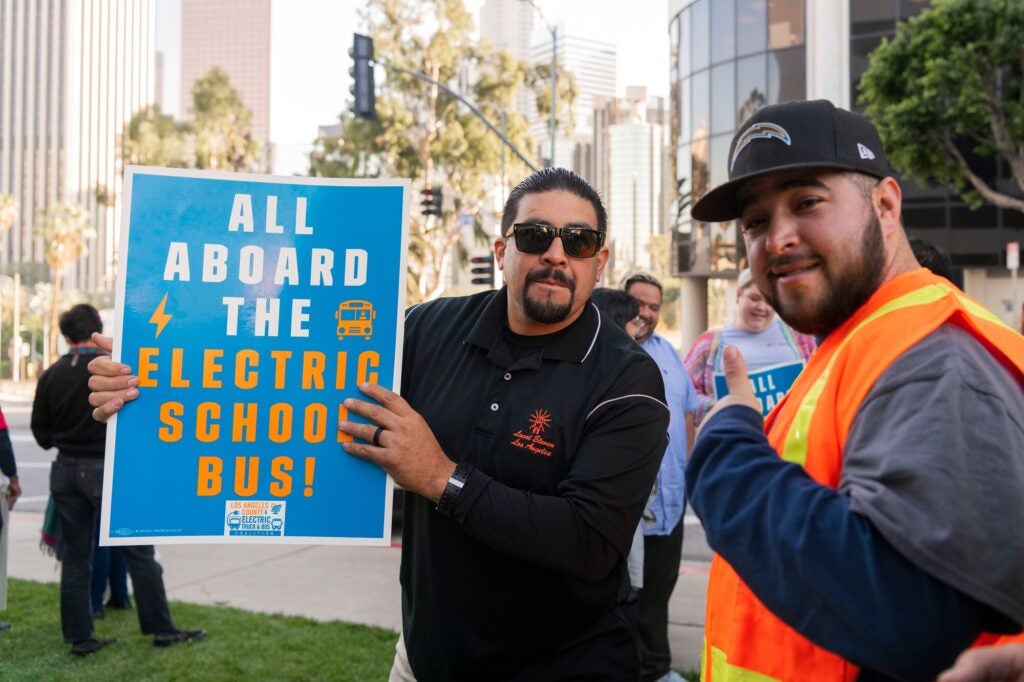
Supporters of electric zero-emission school buses take part in a rally outside the Los Angeles Unified School District headquarters on Nov. 15, 2022. (Hannah Benet for Earthjustice)
We’re already beginning to see benefits of our work on the ground, with the first transit agency in the nation to electrify its entire fleet already here, and cities like New York and D.C. investing in electric public transit. We’ve since expanded our campaign to shift almost every kind of vehicle to zero emissions, including a critical fight to electrify the nation’s fleet of postal trucks.
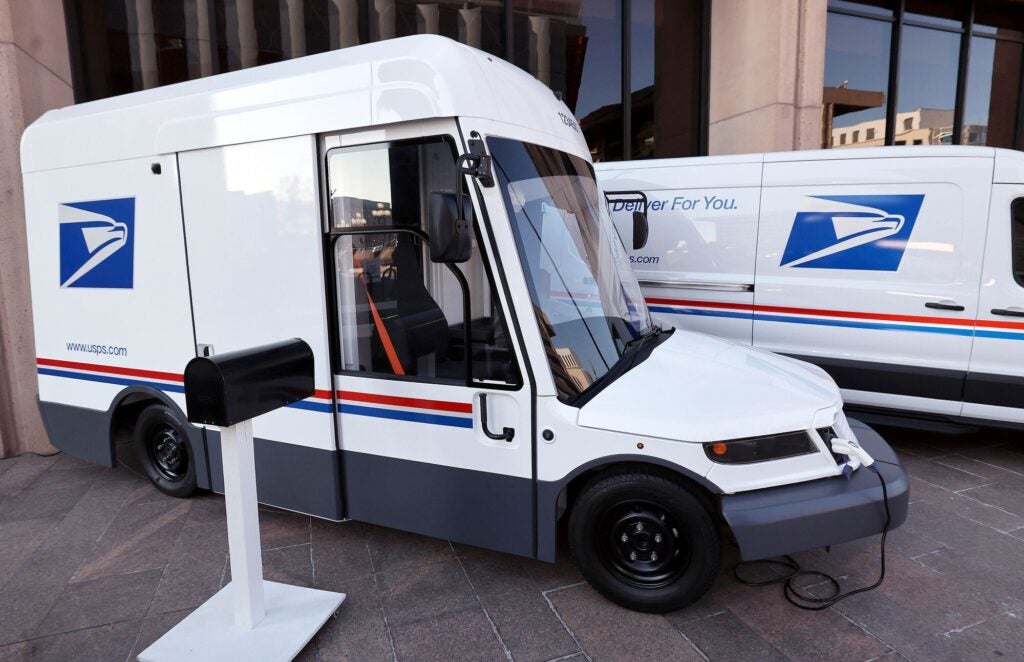
(Kevin Dietsch / Getty Images)
These changes aren’t limited to passenger vehicles. From the worst polluting freight trucks on the road, to the refrigerated trucks that bring shipments of milk and ice cream to your supermarket, to the locomotives on tracks through your neighborhood, to the tugboats and other vessels that keep our ports running, clean, electric technology is replacing dirty diesel.
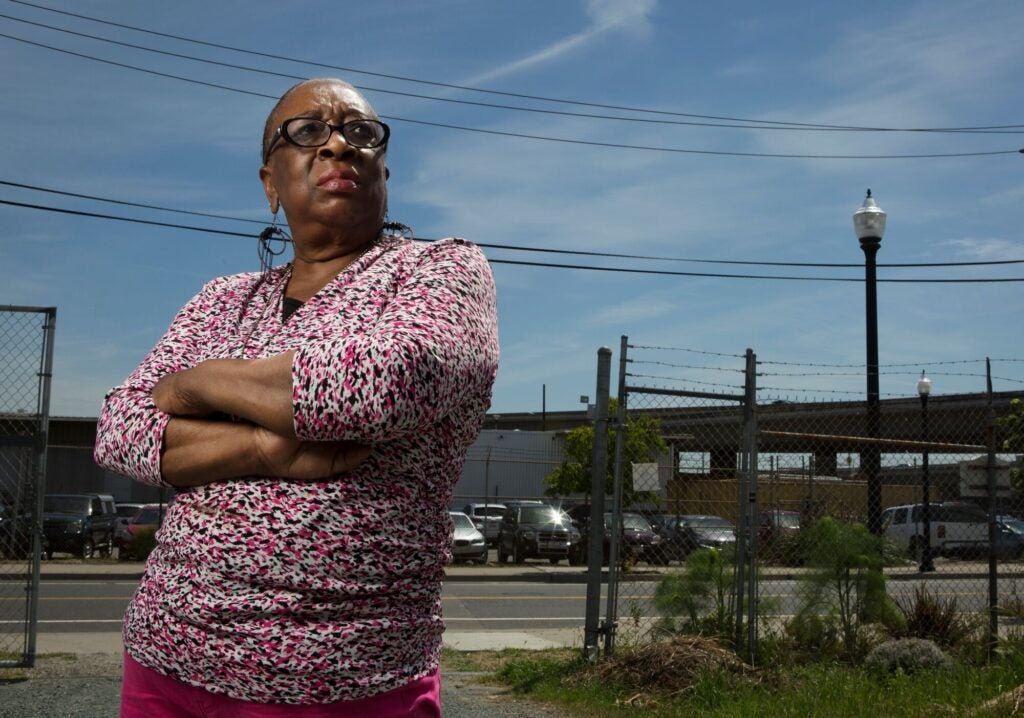
Margaret Gordon of the West Oakland Environmental Indicators Project has fought for years to clean up the air in West Oakland, Calif., from toxic diesel pollution. (Chris Jordan-Bloch / Earthjustice)
People across this country burn dangerous amounts of fossil fuels in our homes for heating and cooking, degrading our indoor air and increasing rates of asthma and other lung diseases. We don’t need to: better technology exists now.
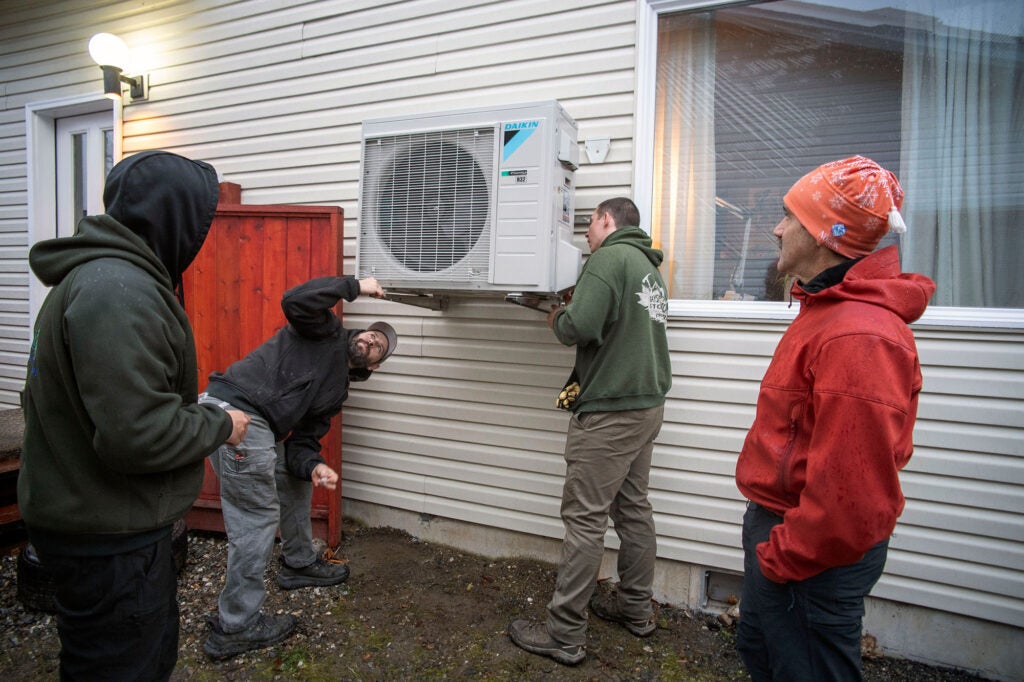
Cody Galletes, left, Sonny Ashby and Robby Brian, of Alaska Plumbing and Heating, install a heat pump onto its stand at a home as Andy Romanoff, executive director of Alaska Heat Smart, right, watches in Juneau, Alaska. (Michael Penn for Earthjustice)
Electric heat pumps provide powerful, efficient home heating and cooling with one appliance and no side of dangerous emissions. Modern induction stoves emit none of the harmful nitrogen oxides of gas stoves, and they’ve eliminated the drawbacks of older electric stove models from decades ago — indeed, a growing number of professional chefs prefer induction cooking to methane gas.
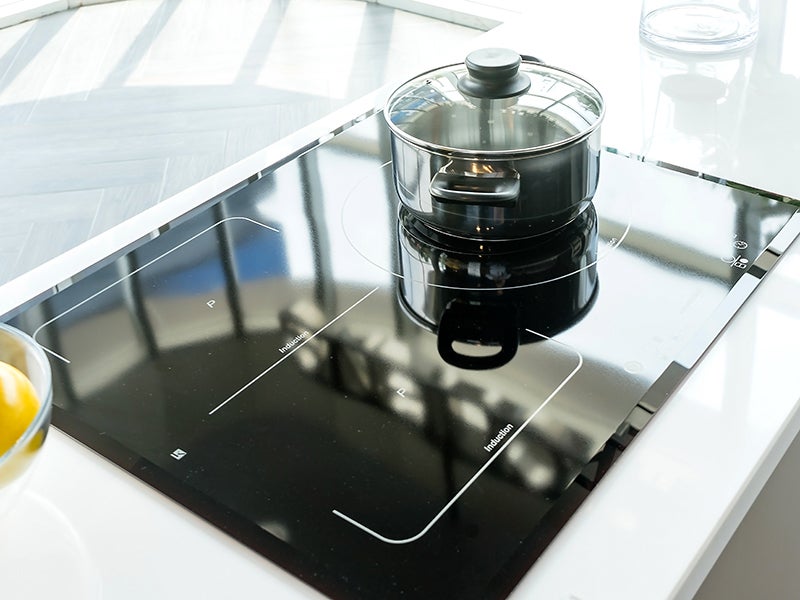
Stainless steel cooking pot and pan on induction stove in modern kitchen. (Gabriel Albu / Getty Images)
Early waves in California, led by cities to ensure new housing is built with nonpolluting appliances, have now grown into an all-electric building movement from coast to coast with local and state level leadership. New York has recently taken charge with a landmark law to cut costs and save lives with all-electric new construction. We’re hard at work in California, New York, and Maryland to shift our homes and buildings to modern appliances.
We’re also busy tackling sectors long considered difficult to decarbonize in order to cover glaring gaps in the climate landscape — namely the industrial sector, which is responsible for nearly a quarter of U.S. climate pollution. To that end, we won a victory in Southern California with a trend-setting regulation to electrify commercial food manufacturing operations.
We don’t just want to shift our transportation sector and buildings to zero emissions solutions. We want to run it all on a renewable energy grid too.
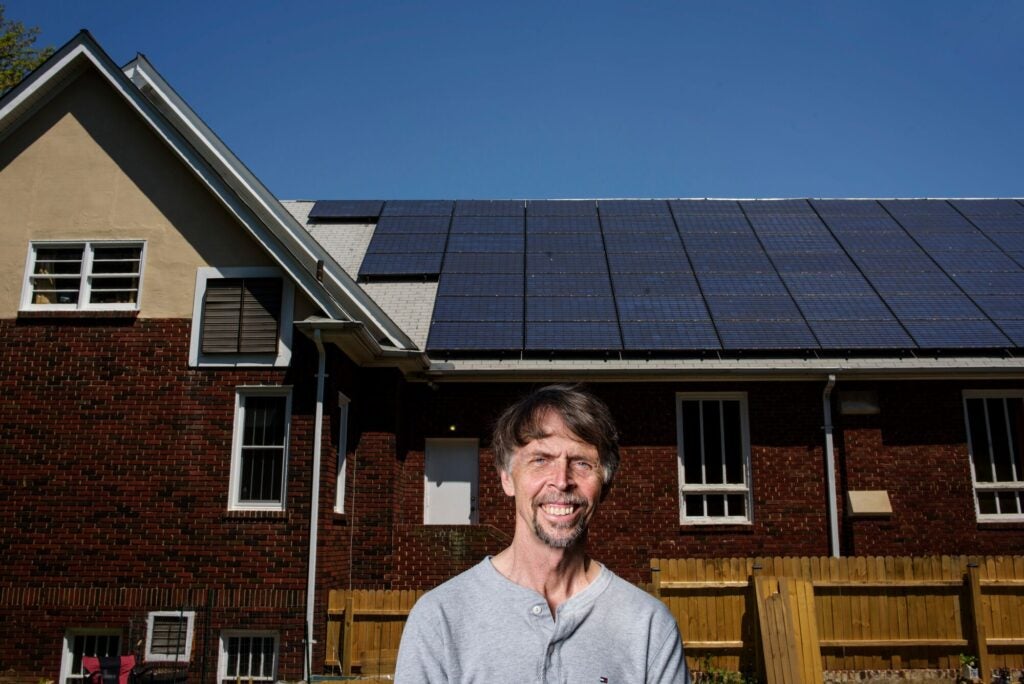
David Brosch, President of the University Park Community Solar, LLC, stands in front of a 22 kilowatt solar electric array atop the roof of the University Park Church of the Brethren in University Park, Md. The solar panels on top of the church produces an estimated 25% more energy than the church needs per year. (Matt Roth for Earthjustice)
As we electrify homes, offices, and factories, we need to ensure that electricity production is clean, and growing more clean power programs like the landmark community solar program in Maryland, fighting proposed gas plants in California to replace them with clean energy options, and championing landmark legislation to set 100% clean energy targets will help get us there.
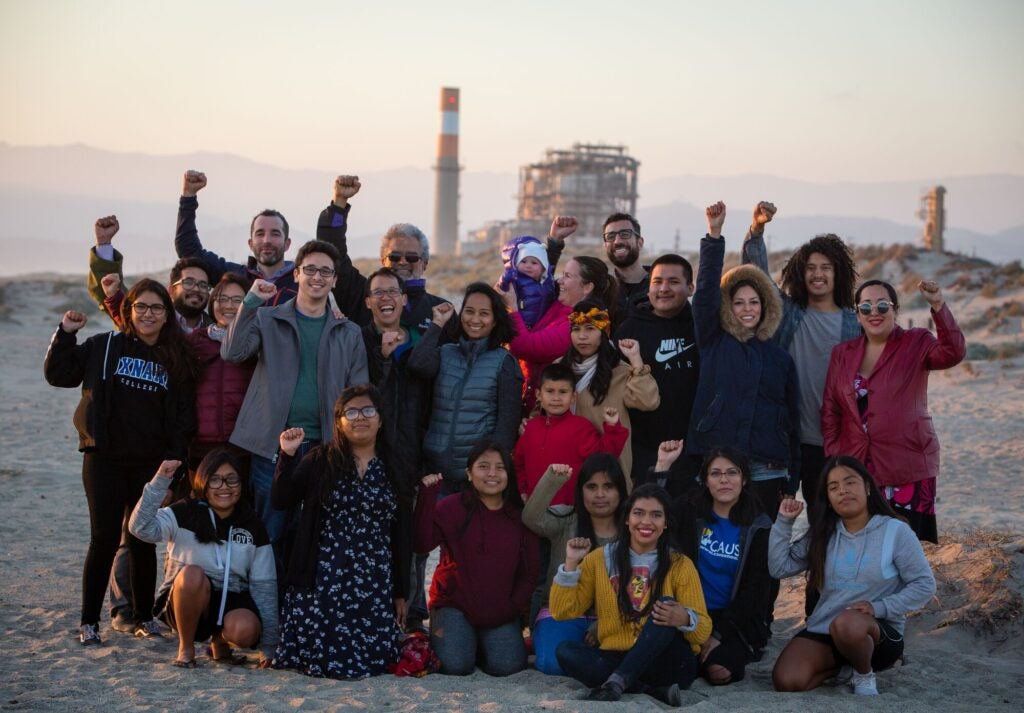
Oxnard resident celebrate in front of the Mandalay Generating Station in Oxnard, CA. The location was set to be the site of the Puente Power Station, a proposed gas power plant. (Chris Jordan-Bloch / Earthjustice)
This also means avoiding distractions created by the fossil fuel industry as it tries to delay the inevitable. Boondoggles like dirty hydrogen projects, carbon capture and storage, or “renewable natural gas” waste money and accomplish little other than maintaining profits for companies selling dirty fuels.
The transition also means shifting energy planning in states, and beginning to chart out the end of the methane gas distribution system, which must be trimmed back as households shift away from gas and onto modern electric appliances. This means scrutinizing utilities’ long-term plans and budgets for spending ratepayer money, and sunsetting subsidies for methane gas to ensure we stay on track for an electric future. The end result will clean our air, protect our lungs, and safeguard our climate.
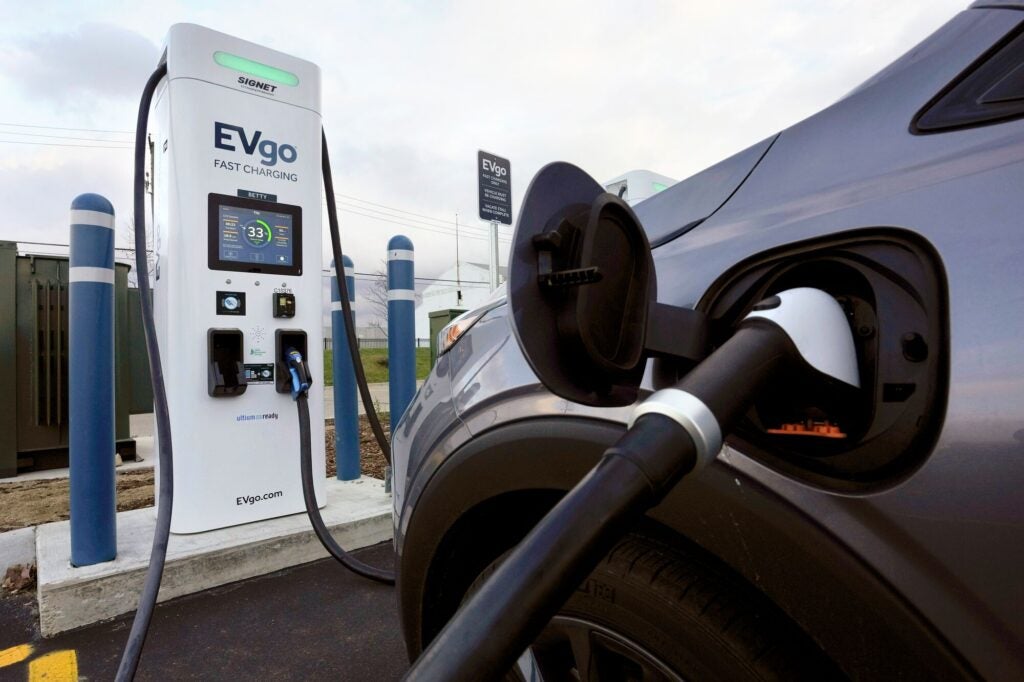
An electric vehicle charges at a fast charging station in Detroit on Nov. 16, 2022. (Paul Sancya / AP)
Publications & Resources
Features
Make Your Home Cleaner and Comfier with a Heat Pump
Heat pumps hold a steady temperature — and give off none of the unhealthy fumes of traditional furnaces.
The Myth of “Renewable Natural Gas” for Building Decarbonization
A report by Earthjustice’s Right to Zero campaign and Sierra Club highlights the gas industry’s deceptive efforts to keep our homes and buildings tethered to gas combustion.
Reclaiming Hydrogen for a Renewable Future: Distinguishing Oil & Gas Industry Spin from Zero-Emission Solutions
A report from the Right To Zero campaign scrutinizes claims about hydrogen and delves into how to deploy it as a meaningful climate solution.
Featured
LA Should Go for the Gold When It Comes to Electric Transit Buses
With the LA 2028 Olympics looming, LA Metro should keep pace with Olympic cities.
Featured
How Maryland is Taking Climate Action into Its Own Hands — While Cutting Energy Bills
The state’s new law shows that clean energy measures are gaining ground state-by-state, despite Trump and the fossil fuel industry’s efforts to prop up gas.
Featured
Fighting to Breathe: Andrea Vidaurre is Taking on the Freight Industry’s Pollution from California to Washington, D.C.
Featured
The Electric School Bus Is the Climate Hero We Need
Key Partners
California
Center for Community Action and Environmental Justice
Central Coast Alliance United for A Sustainable Economy
Central Valley Air Quality Coalition
Clean Air Now KC
Climate Health Now
East Yard Communities for Environmental Justice
IBEW Local 11
Jobs to Move America
LA County Electric Truck & Bus Coalition
Leadership Counsel
Long Beach Alliance for Children with Asthma
Moving Forward Network
NRDC
Pacific Environment
People’s Collective for Environmental Justice
Sierra Club
Union of Concerned Scientists
West Long Beach Association
West Oakland Environmental Indicators Project
D.C.
Chesapeake Climate Action Network
DC Coalition to Reduce Asthma & Lead
DC Environmental Network
Empower DC
Extinction Rebellion
NAACP DC Chapter – Environmental Justice Committee
Sierra Club – DC Chapter
Ward 3 Democrats
New York
Alliance for a Green Economy
Building Decarbonization Coalition
El Puente
ElectrifyNY Coalition
Environmental Advocates NY
Jobs to Move America
Long Island Progressive Coalition
New York City Environmental Justice Alliance
New York Communities for Change
New York Lawyers for the Public Interest
New Yorkers for Clean Power
NRDC
PUSH Buffalo
Red Hook Initiative
Rewiring America
Sane Energy
Sierra Club
Tri-State Transportation Campaign
UPROSE
Urban Green Council
WE ACT for Environmental Justice
Win Climate
Maryland
350 Montgomery County
Cedar Lane Environmental Justice Ministry
Center for Progressive Reform
Chesapeake Climate Action Network
Chesapeake Physicians for Social Responsibility
Climate Communications Coalition
Climate Law & Policy Project
Climate Mobilization Montgomery County
Climate Reality Greater Maryland
Elders Climate Action Maryland
Green & Healthy Homes Initiative
Howard County Climate Action
Indivisible Howard County MD
Interfaith Power & Light (DC, MD, No.VA)
Maryland Energy Advocates Coalition
Maryland League of Conservation Voters
Maryland PIRG Foundation
MLC Climate Justice Wing
National Consumer Law Center
Sierra Club - Maryland Chapter
Unitarian Universalist Legislative Ministry of Maryland
Photo credits (Slideshow at top): Adrian Martinez of Earthjustice, with USPS mail trucks (Hannah Bennet for Earthjustice). Yasmine Agelidis of Earthjustice speaking at an electric bus rally (Hannah Bennet for Earthjustice). Cooking on an induction stove (Getty Images). Electric transit bus in Los Angeles (Ringo Chiu via AP). Taylor Thomas of EYCEJ in an electric truck (Chris Jordan-Bloch / Earthjustice). Manufacturing an electric bus (Courtesy of BYD). Heat pump inside a home in Juneau (Michael Penn for Earthjustice). A school bus in New York City (Brittainy Newman / AP). Electric heavy duty truck (Dennis Schroeder / NREL). Homeowner with their newly installed heat pump in Juneau (Micheal Penn for Earthjustice). Electric garbage truck (Courtesy of Mack Truck). Electric transit bus in New York City at a charging station (Marc A. Hermann / MTA).
